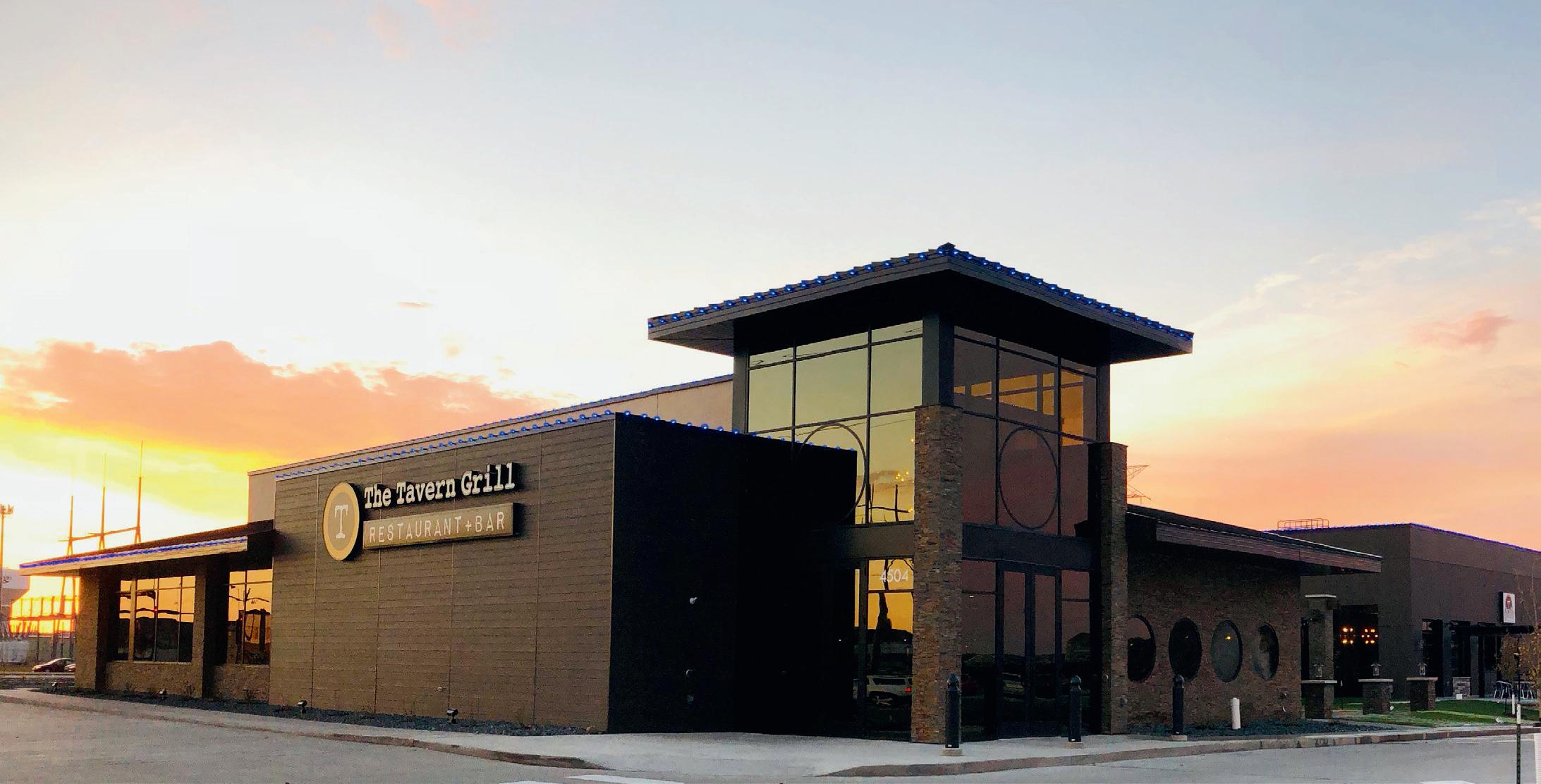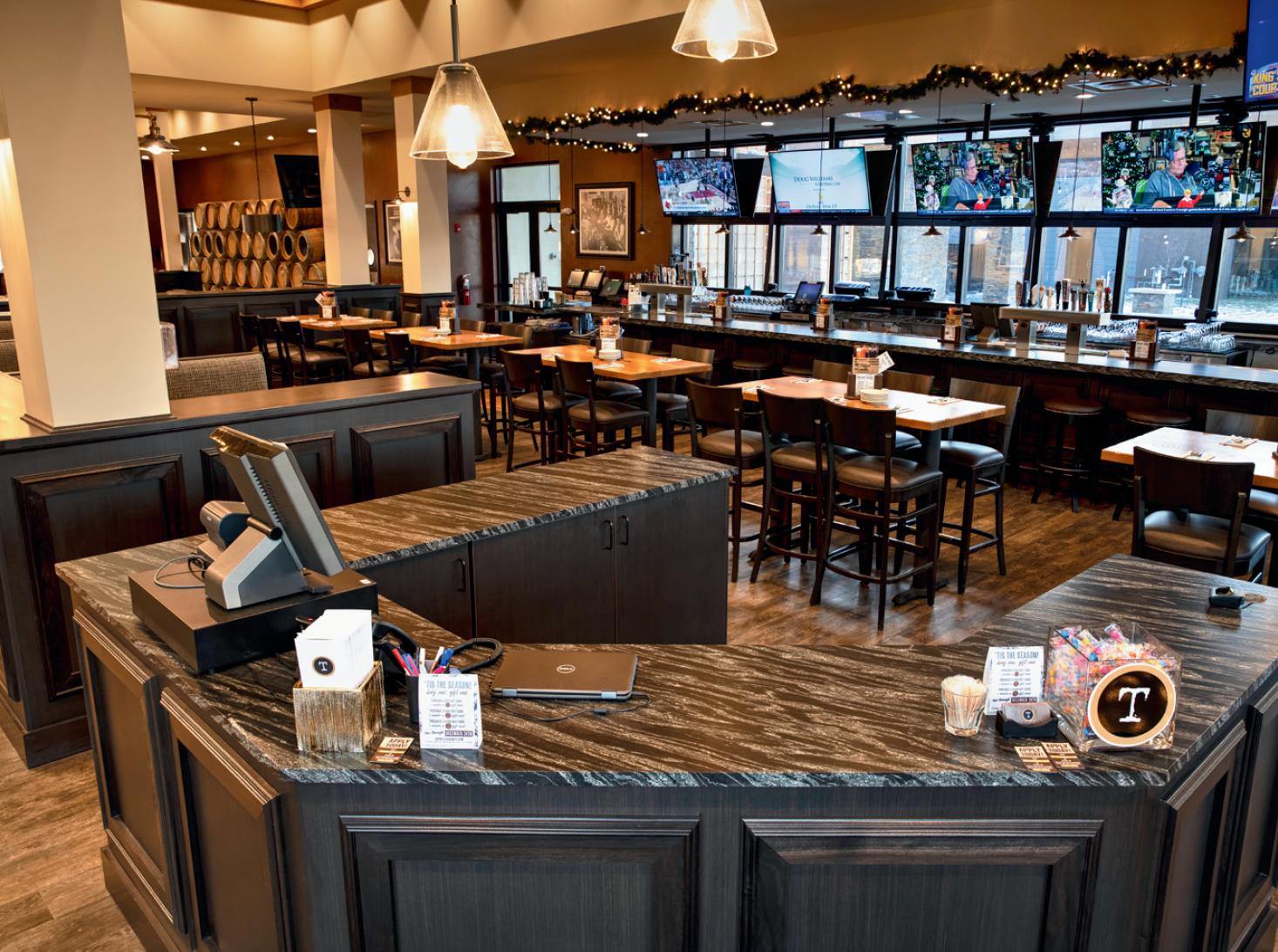
PAGE 20


PAGE 20
BANKS ARE RESPONDING TO THE EVOLVING ECONOMIC LANDSCAPE PAGE 16
INSPIRING THE NEXT GENERATION OF ENGINEERS PAGE 26
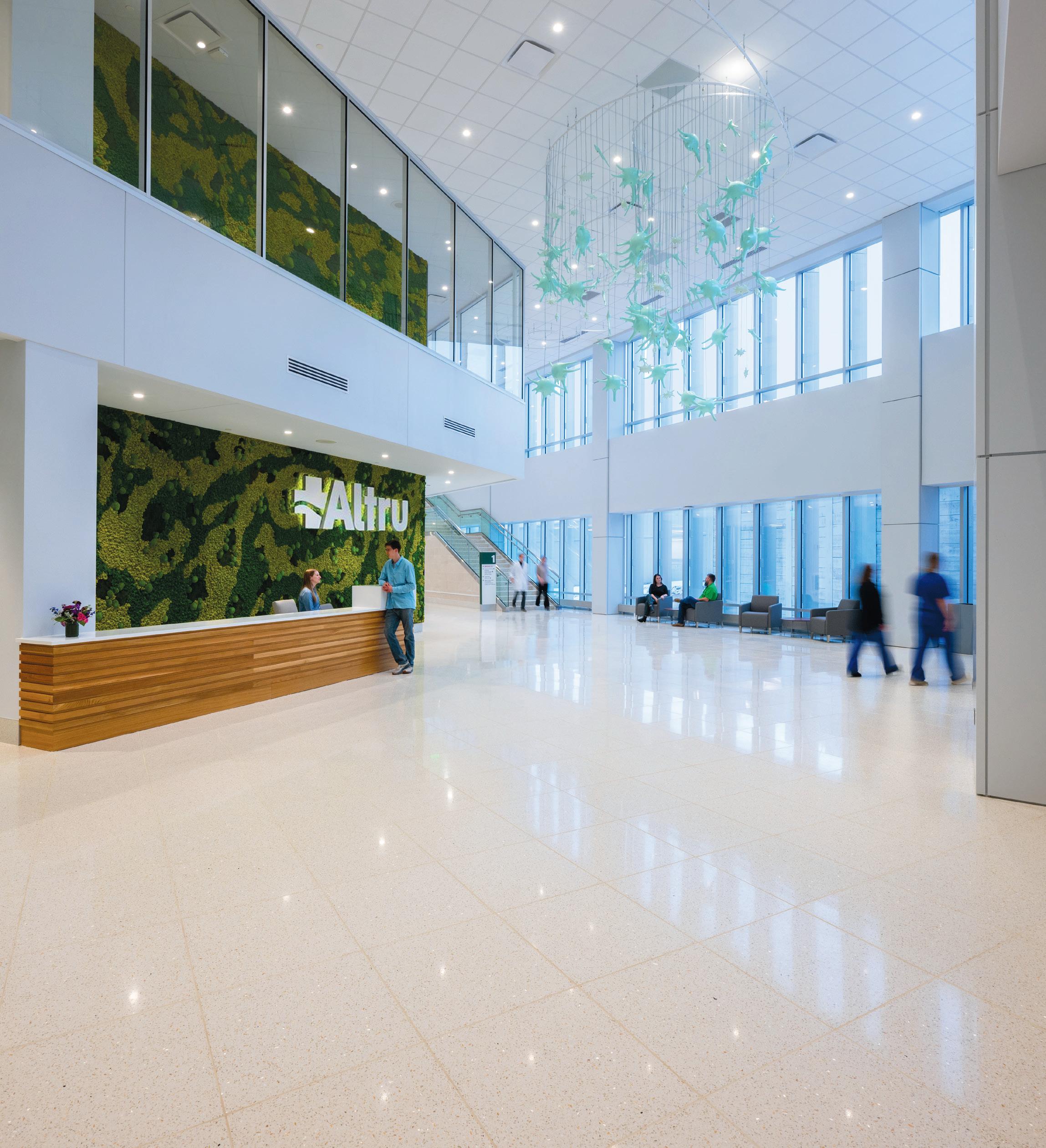
At seven stories and over 500,000 square feet, Altru Health System went above and beyond to bring world-class healthcare to Grand Forks, ND, and its surrounding communities. Altru’s new “Hospital in the Park” embodies physical, emotional, and spiritual healing that prioritizes the patient and family experience. From its green spaces branching from Sertoma Park to its daylit patient and staff spaces, Altru is welcoming state-of-the-art healthcare that balances innovative technology with compassionate care — healing from the outside in.



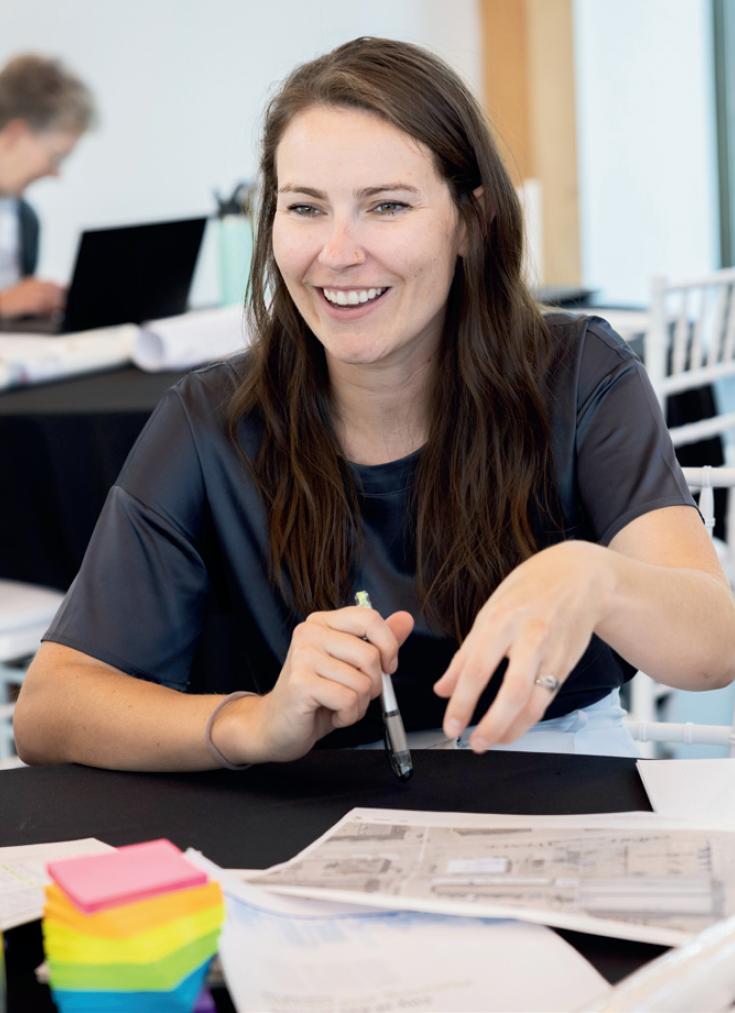
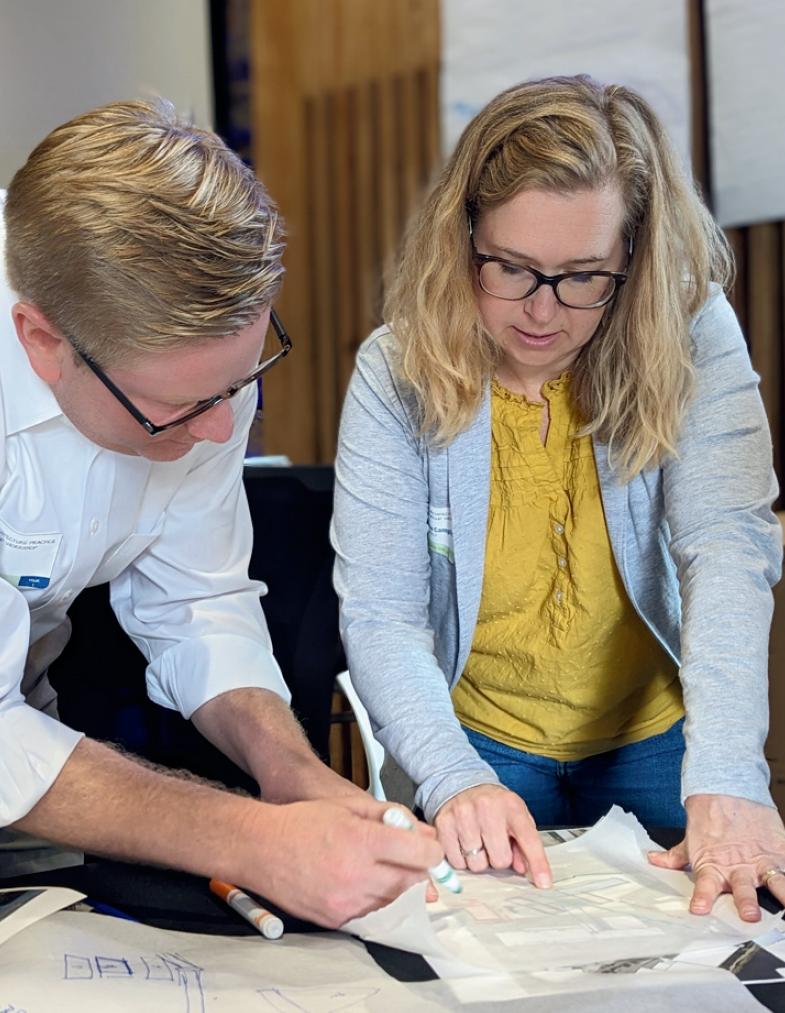
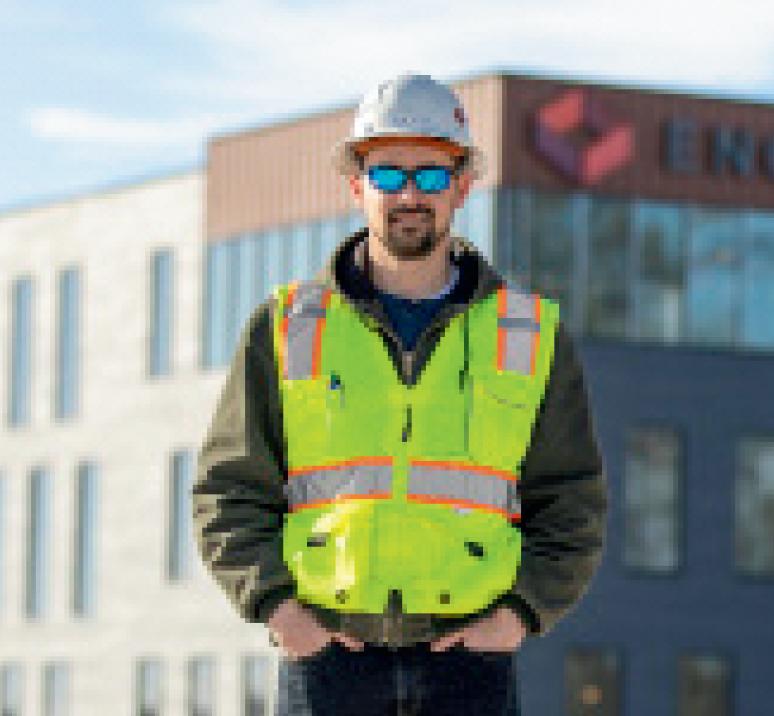
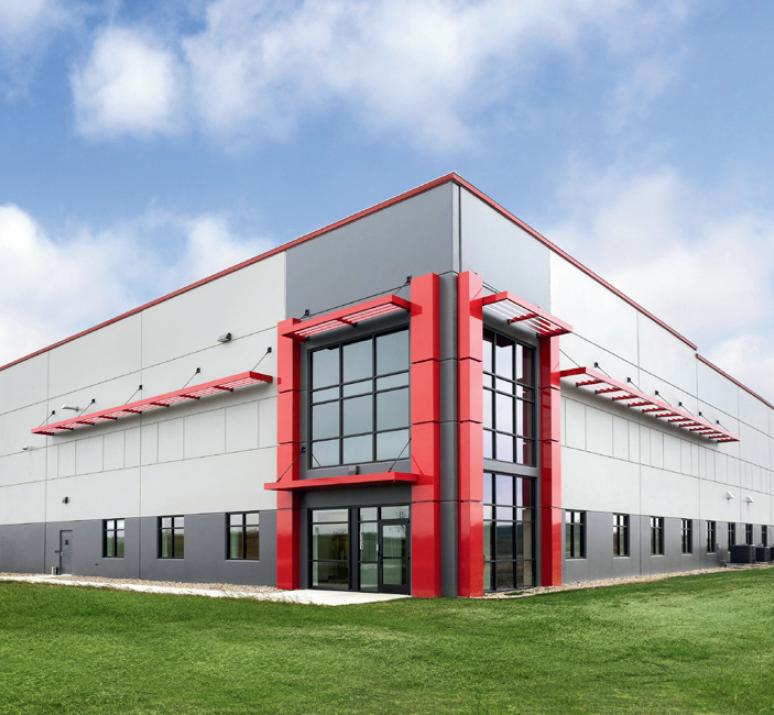
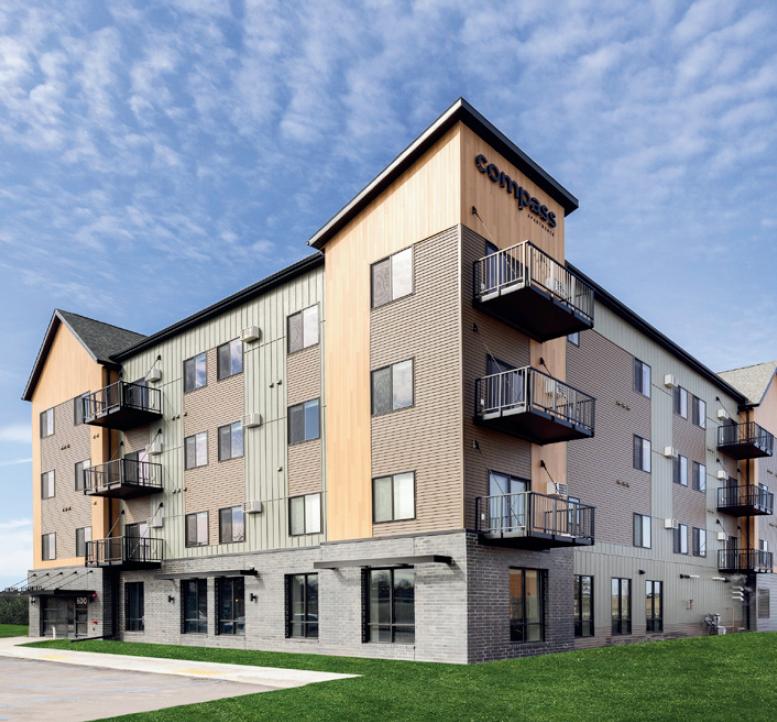
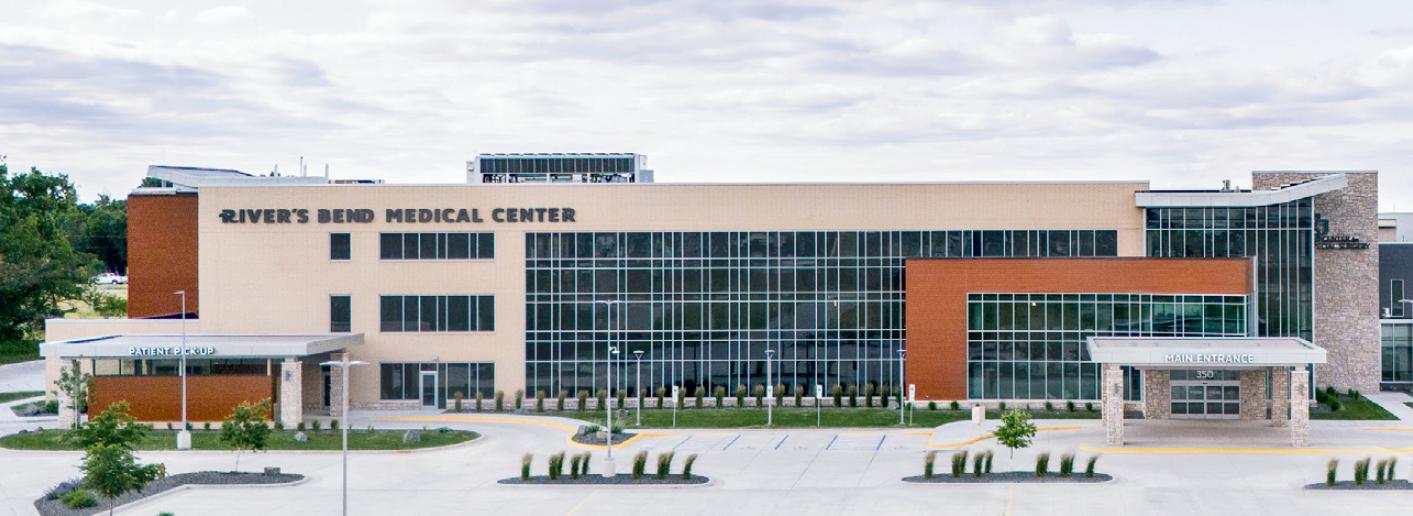
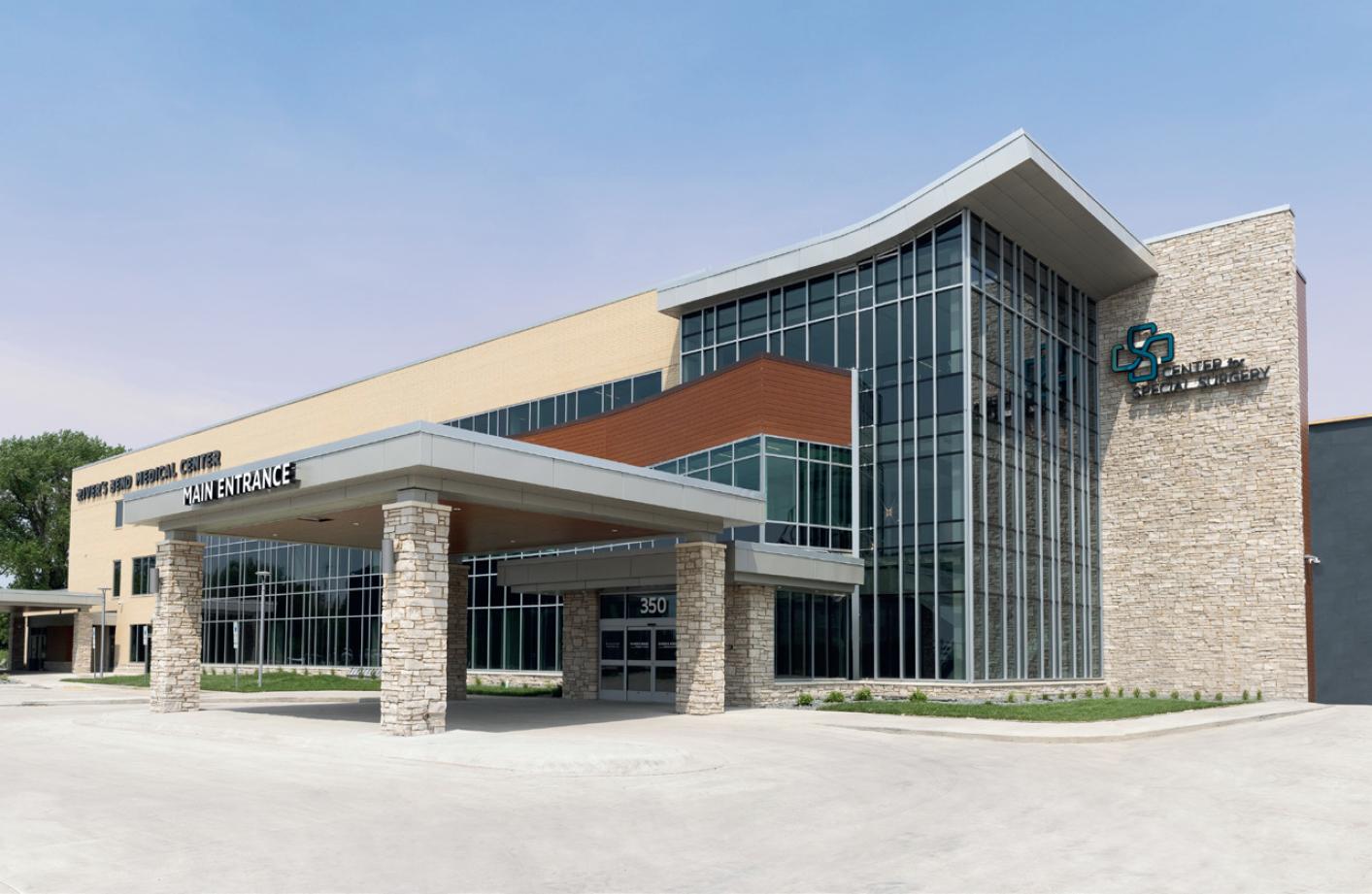
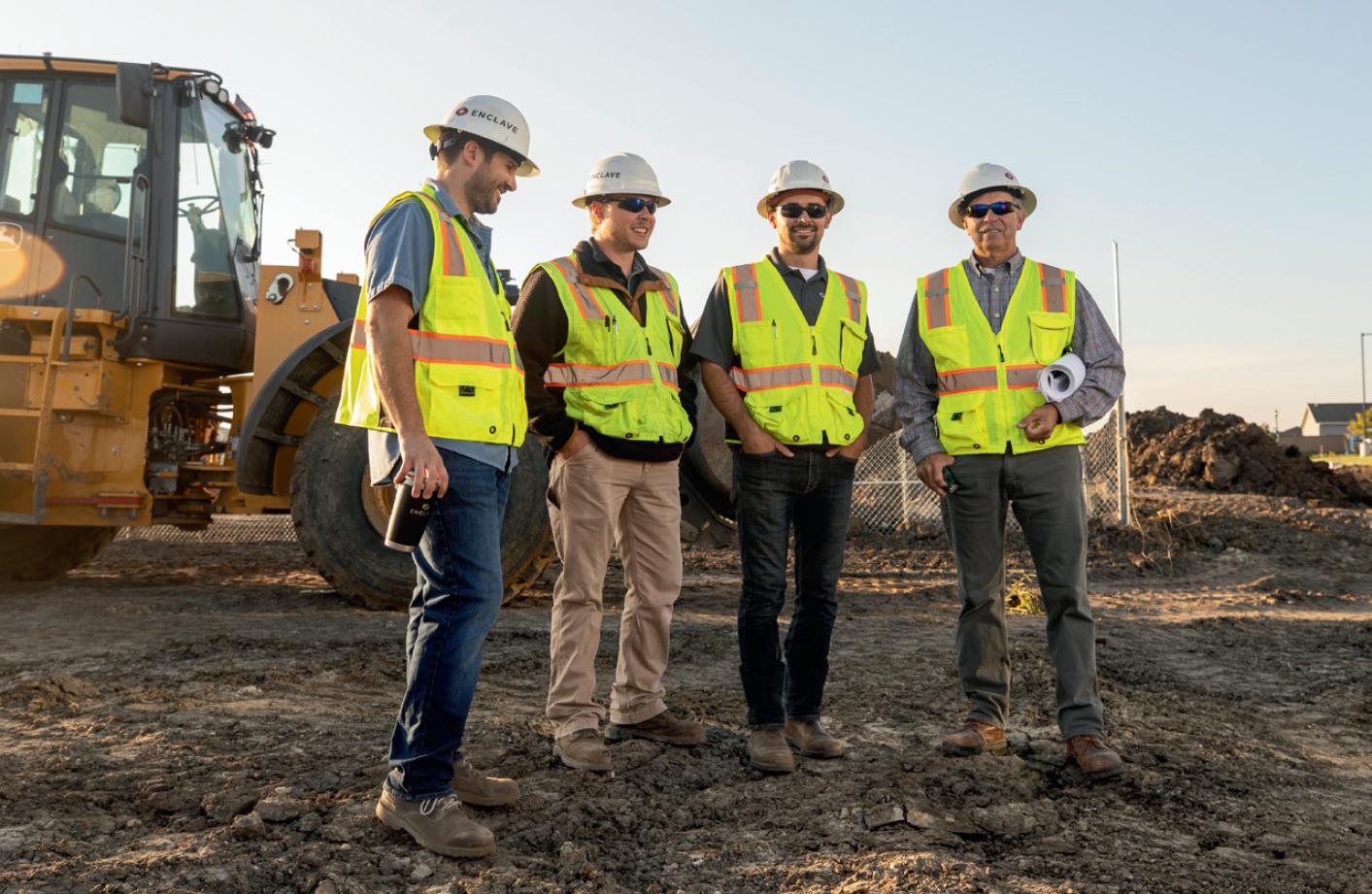


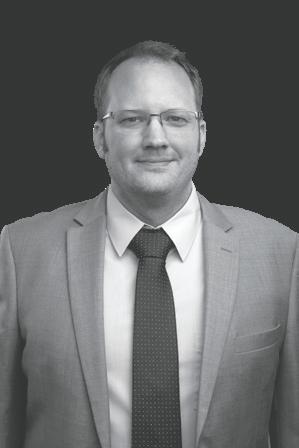
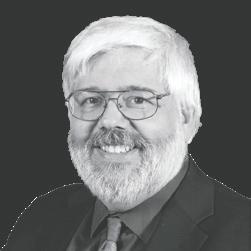
“ “ “
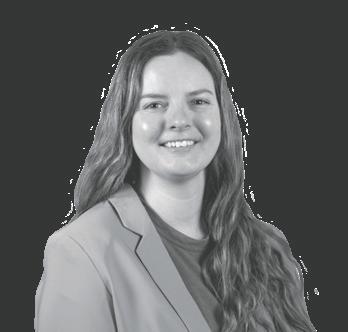
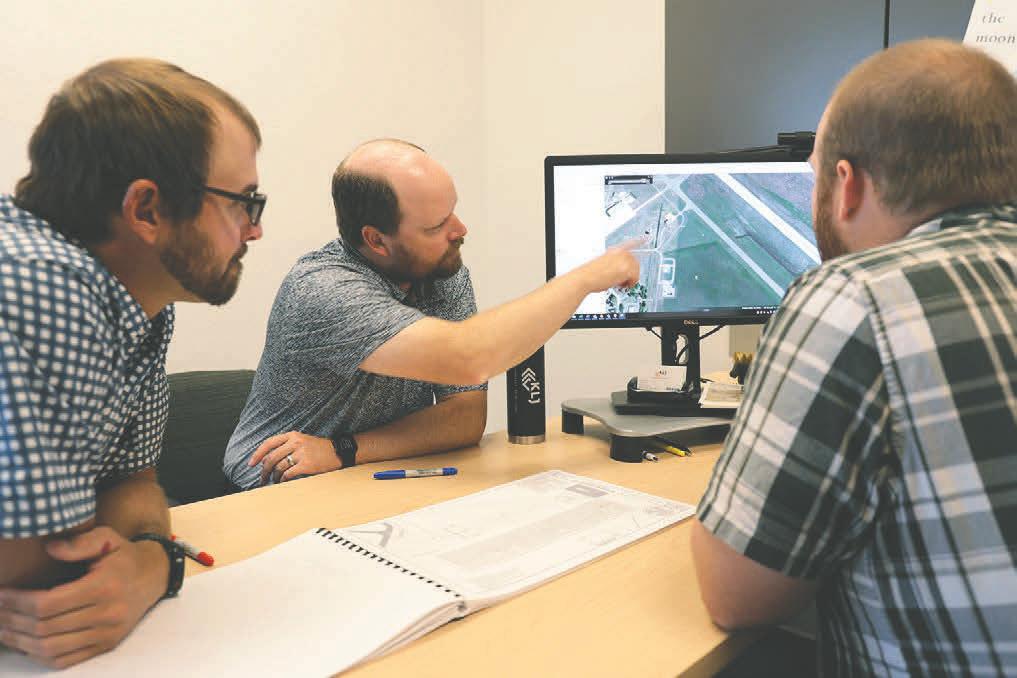
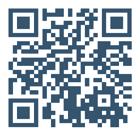
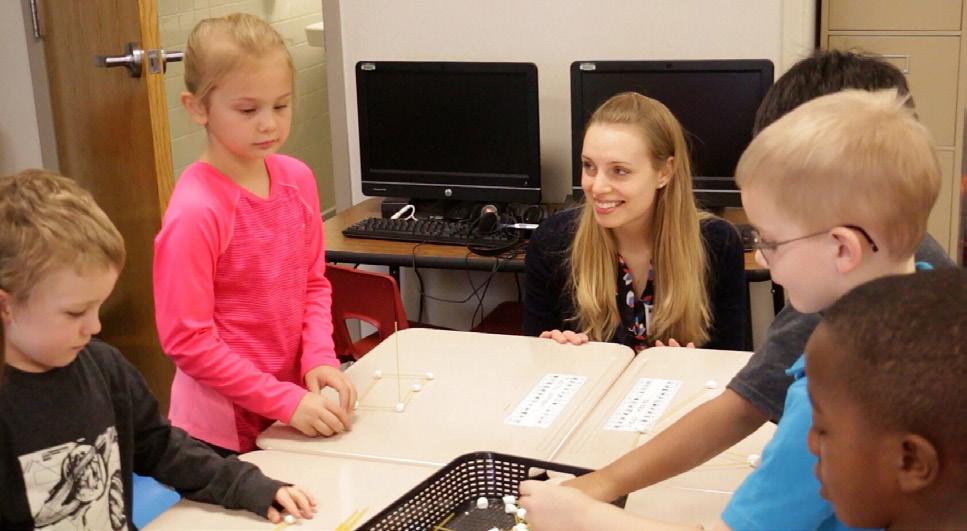
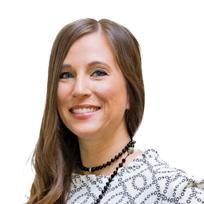
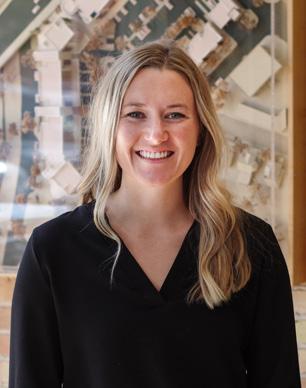
ARCHITECTURE INC. INTERIOR DESIGNER STOKES EARNS CERTIFICATION
SIOUX FALLS, S.D. • NIKKI STOKES, IIDA, NCIDQ, CHID, SDID, INTERIOR DESIGNER AT ARCHITECTURE
INCORPORATED, HAS RECENTLY EARNED HER CERTIFIED HEALTHCARE INTERIOR DESIGNER (CHID) CERTIFICATION. STOKES, WHO HOLDS A BACHELOR’S DEGREE IN INTERIOR DESIGN FROM THE UNIVERSITY OF NORTHERN IOWA, HAS BEEN WITH OUR TEAM SINCE 2018 AND BRINGS 12 YEARS OF INTERIOR DESIGN EXPERIENCE. HER NEW CREDENTIAL SIGNIFIES HER QUALIFICATIONS, EXPERTISE, AND UNDERSTANDING OF CURRENT CODES IN HEALTHCARE INTERIOR DESIGN. IT REFLECTS HER COMMITMENT TO ENHANCING THE HEALTH AND SAFETY OF PATIENTS, PROVIDERS, AND VISITORS. STOKES IS CURRENTLY THE ONLY INTERIOR DESIGNER IN SOUTH DAKOTA WITH THIS CERTIFICATION. WE ARE INCREDIBLY PROUD OF HER ACCOMPLISHMENT AND LOOK FORWARD TO SEEING HER APPLY HER SKILLS IN HEALTH-CARE INTERIOR DESIGN.



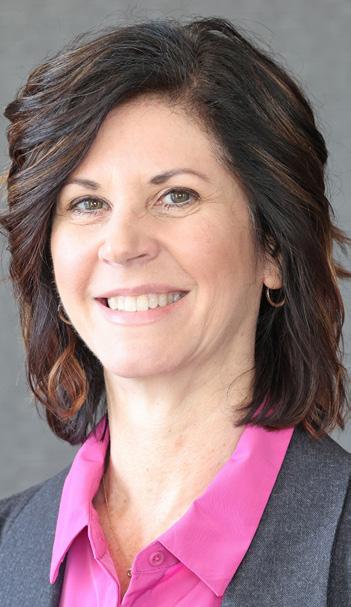
Prairie Business covers a few industries multiple times each year, and we work hard to find new stories to tell in each edition. Architecture and engineering are two of those sectors that are regularly featured here. As a prelude to our March issue, which will feature the winners of the Top 25 Women in Business contest, we’ve got a piece spotlighting a few women architects in the region.
Still a male-dominated industry, more and more women are entering architecture and making names for themselves. In 2023, women made up 27% of the total architect population, according to the National Council of Architectural Registration Boards. They’re an influential segment of the profession, and I was surprised to learn that the architects interviewed for this month’s feature all became interested in the industry during childhood. Whether building forts, houses for their Barbies or helping to build their own family’s home, these professionals are creative and resourceful and didn’t let being a girl stop them from entering a male-dominated field.
In this edition we also feature engineering, this time focusing on the outreach done by area firms to students, whether through STEM programming or college scholarships. Exposing students at a young age to the variety of engineering careers out there will only benefit the sector, which needs more workers. The Bureau of Labor Statistics says occupational predictions and worker characteristics in the engineering and computer-related occupations sectors are expected to grow significantly. Industrial engineering is projected to have a growth rate of 11.7% by 2032. Civil engineering is right behind industrial engineering when it comes to job growth.
This month, we talked to a tax expert in Grand Forks, North Dakota, to find out what businesses need to know before filing this year. He advised business owners to understand what deductions they can take, and to plan for estimated taxes, among other things.
Banking and finance is another sector covered in this edition. Three leaders in the region’s financial institutions shared what they think are the biggest challenges for banks this year and how their organizations will face them. Blaine DesLauriers at First International Bank & Trust lists liquidity, quality loan growth, and fraud and financial crimes as the top three for his organization. With data breaches on the rise, cybersecurity continues to be a top priority for all the institutions we heard from.
We continue our celebration of the 25th anniversary of Prairie Business with a look back at an edition from 2018, which featured coverage of smart buildings. Smart buildings have systems that communicate, such as heating and cooling, lighting, plumbing, access control, and security, among other aspects. These systems have digital sensors that can track energy consumption and other data, and interact with software to help facilities managers optimize the systems. It’s always fun to look through the archives and find out what was trending in business years ago.
I hope you enjoy this month’s edition of Prairie Business. If you have story ideas, please send them over to give us a call.
Until next month, Carrie McDermott
I look forward to hearing from you at cmcdermott@prairiebusinessmagazine.com or 701-780-1108.
PUBLISHER
KORRIE WENZEL
AD DIRECTOR
STACI LORD
EDITOR
CARRIE MCDERMOTT
CIRCULATION MANAGER
BETH BOHLMAN
LAYOUT DESIGN
JAMIE HOLTE
ACCOUNT MANAGER
NICHOLE ERTMAN
800.477.6572 EXT. 1162
NERTMAN@ PRAIRIEBUSINESSMAGAZINE.COM
Prairie Business magazine is published monthly by the Grand Forks Herald and Forum Communications Company with offices at 3535 31st St. S., Suite 205, Grand Forks, ND 58201. Subscriptions are available free of charge. Back issue quantities are limited and subject to availability ($2/copy prepaid). The opinions of writers featured in Prairie Business are their own. Unsolicited manuscripts, photographs, artwork are encouraged but will not be returned without a self-addressed, stamped envelope.
SUBSCRIPTIONS
Subscriptions are free prairiebusinessmagazine.com
ADDRESS CORRECTIONS
Prairie Business magazine PO Box 5359, Grand Forks ND 58206-5359
Beth Bohlman: bbohlman@ prairiebusinessmagazine.com
ONLINE www.prairiebusinessmagazine.com
Youdon’t hireengineers whoare “goodenough.” Youhirethe very best. Incidentally,sodowe.























ThereisnoB -Team.



BY CARRIE MCDERMOTT
Editor’s Note: This is the sixth part in a series looking back through the archives of Prairie Business as part of our 25th anniversary celebration.
The February 2018 edition of Prairie Business featured a story on automation in buildings – everything from smart thermostats and smart light bulbs to smart offices and homes. The editor at that time was Tom Dennis, who wrote the article highlighting home and office automation technologies.
With the advent of the smartphone, companies saw unlimited opportunities to offer ways to automate things people had been doing by hand for decades. Smart building technologies were offering remotely controlled lights, TVs, alarms and thermostats. The idea “dates back to at least 1978,” the article states, “when X10 building automation products first started appearing in Sears and Radio Shack stores.”
The X10 products “talked” to each other through a home’s wiring. In the original setup, a customer would plug a multi-switch remote control into a kitchen outlet, for example. The customer would scatter smaller X10 modules to outlets scattered around the home, and plug lams, televisions or other appliances into these. By flipping a switch on the central controller, the customer could tell the X10 module in another room to turn the power on or off, and voila, instant home automation.
Today, it’s usually an app on a smartphone or tablet that acts as the control for a smart home or office. Smart thermostats can be programmed to turn the lights on and the heat up an hour before a person comes home, for example.
Smart rooms in hospitals mean a patient’s bed is tied to the building, and it can sense many of the things a patient needs, such as lighting changes, room temperature changes and even patient position changes. Sensors track heart
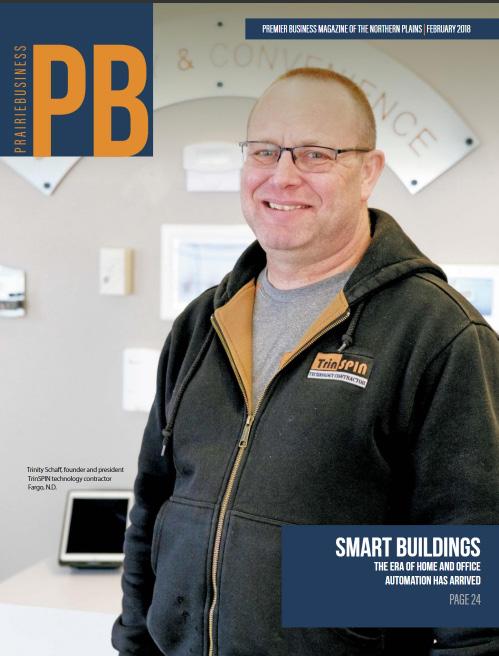
THE COVER OF THE FEBRUARY 2018 EDITION OF PRAIRIE BUSINESS, FEATURING SMART BUILDINGS. / CARRIE MCDERMOTT
rates, breathing rates and when the patient leaves the bed.
Today’s new apartment buildings are often equipped with some type of smart system. Managing the energy use of a building has become faster and more reliable thanks to these technologies, which can be like having an energy engineer on every piece of equipment roundthe-clock. These technologies were designed to enhance and ease our way of living.
With all this connectivity comes vulnerabilities, including data privacy concerns, legacy systems integration and cybersecurity threats, among others. Sometimes it makes a person long for the days of analog.
Other stories in the same edition include a column by Dennis Walk, chief credit officer at First International Bank & Trust, about keeping track of the Fed’s interest rate changes and how they affect business; the importance of marketing your business by occasional Prairie Business columnist Matthew Mohr, CEO of Dacotah Paper Co.; and protecting your employees and your company from sexual harassment. An interview with the North Dakota Bankers Association President and CEO Rick Clayburgh, who is a former state tax commissioner, covered the importance of community banks and the role they play in the region, as well as emerging trends in the banking sector.
These topics are still relevant today and are covered in Prairie Business throughout the year.
Choosing a partner to help your financial institution achieve success is a big decision.
You need a trusted advisor who is experienced, attentive, and invested in helping you accomplish your goals. Brady Martz & Associates has a dedicated team of experts with the capacity to assist you as little or as often as you need.
With a history dating back nearly a century, our team of 465 professionals, including more than 50 shareholders, is dedicated to making a difference in the lives of others. We leverage our strength as a community-based firm utilizing our time, talent, and financial resources to enhance the communities in which we live and serve.
The financial institutions sector is complex and ever-changing. Banks and credit unions are constantly impacted by regulatory changes, updated accounting standards, and new legislation. Oftentimes, keeping up can seem like an impossible task Brady Martz has industry experts ready to make life easier for our clients, with a friendly approach to financial and business advisory services, crafting personalized solutions tailored to your individual needs. Our priority is to get to know you and the ins and outs of your institution to better prepare you for both the challenges and opportunities of the future.


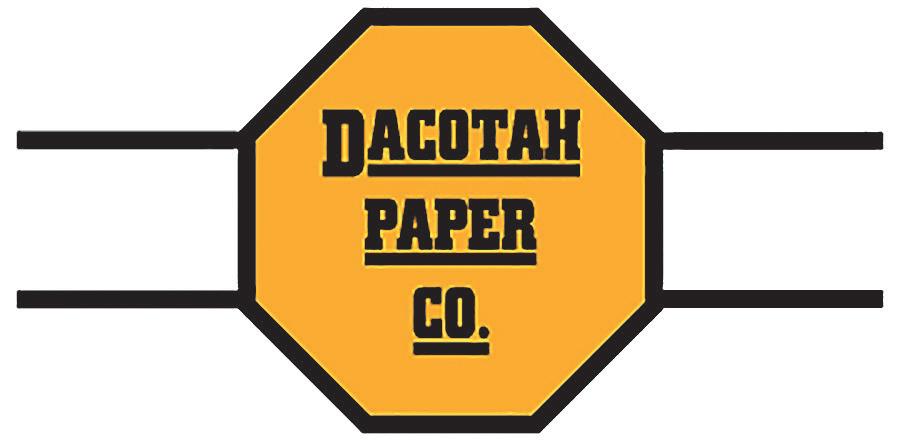

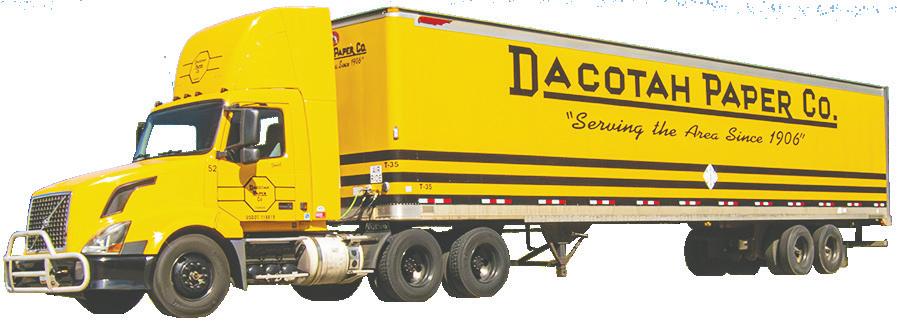

BY JEFF GULLEY
As business owners prepare for tax season, one of the biggest questions is whether the tax cuts adopted in 2017 will extend after 2025.
Lawmakers adopted the Tax Cuts and Jobs Act (TCJA) of 2017 and it represented the most significant tax policy overhaul since the Reagan administration’s 1986 reform, introducing sweeping changes to individual, business and international taxation.
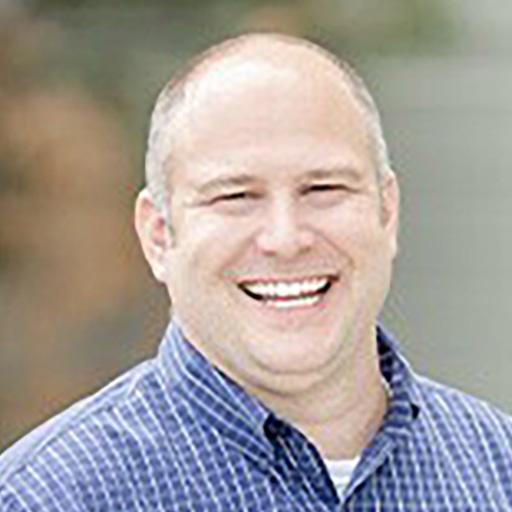
Jacob Franklin, a CPA (Certified Public Accountant) with Brady Martz in Grand Forks, North Dakota, said the first thing for business owners to decide is whether to use tax breaks offered this year or wait to see if those cuts are extended.
“I guess it depends on where you’re at on the political spectrum and whether you think things are going to be extended or not,” he said. “I’m gen-
erally telling people for 2025 if you have an option to take it in ‘25 or ‘26 when it comes to income, it might be ‘25 but understand that things might change in ‘26 and take advantage of everything you can now.”
In specific states like North Dakota, South Dakota and Minnesota, not much has changed from last year to this year.
“You know, there wasn’t a legislative session last year in North Dakota so I don’t know if there’s anything specific that we will be dealing with this session,” Franklin said.
He noted some tips to consider for those filing business taxes this year.
Maintaining accurate and detailed records of all business transactions, including income, expenses, and receipts will help in preparing accurate tax returns and accurate deductions if audited.
“It’s about having accurate records,” he said. “When I’m thinking about small businesses, a lot of it comes down to just financial hygiene.”
Part of making sure records are accurate includes using accounting software to track income and expenses and ensuring deductions are correct.
Part of knowing what deductions are available is learning what expenses are both ordinary, common and accepted in your field as well as necessary and appropriate for your business.
“That’s probably my biggest tip,” Franklin said. “If you’re looking for deductions, make sure you are capturing all the ones that you actually have and that means making sure that you’re using the business card instead of the personal card and vice versa.”
Keep business and personal finances separate by maintaining distinct bank accounts and credit cards for business transactions. This helps in tracking business expenses and income accurately. This can complicate record-keeping and may raise red flags during an audit.
“It’s keeping my business expenses over here, keeping my personal expenses over here, maintaining separate bank accounts and making sure I’m pulling over right credit card,” he said.
For a self-employed person, planning for cash flow is one of the biggest surprises that people run into.
— Jacob Franklin, CPA with Brady Martz
Have a plan to make accurate quarterly payments. If you expect to owe $1,000 or more in taxes when you file your return, you may need to make estimated tax payments quarterly and will use Form 1040-ES to calculate and pay estimated taxes. To avoid penalties, pay estimated taxes on time as well as any interest charged for underpayment of taxes.
“For a self-employed person, planning for cash flow is one of the biggest surprises that people run into,” Franklin said. “If I’m short for 2024 for my tax payments, I’m going to have a balance due in April. April 15 is when that’s due but also April 15 is when the first estimate toward 2025 is due. There’s a reason why people hate that date. It’s not just because of last year, it’s also because of next year.”
Franklin added the estimated tax payments need to be taken more seriously now than in the past because they are tied to the interest rate.
“So currently that estimated underpayment penalty is up to about 8% right now, and it used to be about 3%,” he said. “So, we’re paying a little bit more attention to those estimated tax payments and we’re encouraging them a little bit more because it’s getting expensive.”
What not to do
Franklin advises asking questions of tax professionals before taking a deduction or adding a line item that may not be approved.
“I would stay away from getting any advice from TikTok,” he said. “There have been a number of times where I’ll have clients call me and say, ‘I heard somebody talking about this,’ and of course it’s always coming from social media or whatever. I’m not a fan of that and neither is the IRS. Don’t play around with that stuff and if you’re promoting it, that’s when it can get bad.”
Other things to consider
Franklin recommends paying attention to the political landscape as decisions are made about the extension of tax cuts, revenue projections and estate planning.
“It’s about answering questions like am I going to buy that piece of equipment now or later,” he said. “Am I going to set up a contract where I’m going to receive income now or in 2026? It’s something that would be on my mind. And it’s the same thing for the estate tax. That also expires at the end of 2025 or the limit’s going to go from $14 million down to about $7 million.”
The other thing has to do with farmers and the way we account for traded equipment now. We’re starting to see some farmers getting into these doomsday scenarios with the way they’ve depreciated equipment and not being able to fully depreciate the new stuff.”
For more tax information for businesses, visit a professional tax accountant or the IRS website.

Make a habit of sustained success.
Learn how to create sutained success for your organization.

BY CARRIE MCDERMOTT
When Blaine DesLauriers thinks of the biggest challenges facing financial institutions in 2025, he lists liquidity, quality loan growth, and fraud and financial crimes as the top three at First International Bank & Trust (FIBT). DesLauriers is the senior executive vice president for FIBT in Minot, North Dakota.
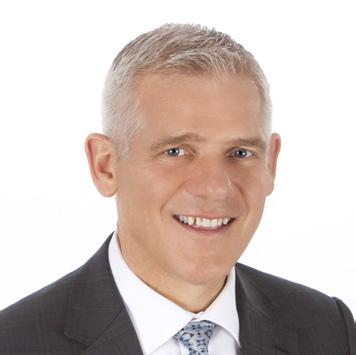
“When it comes to liquidity, growing and retaining deposits has been a bankwide initiative for the past few years ever since the Paycheck Protection Program (PPP) ended,” he said. “The program injected short-term cash into businesses, which created an influx of cash. Our business bankers are staying connected with existing customers and prospects, looking for the best ways we can help. At FIBT, our relationship banking is a team approach which gives us the advantage of having more than one person working exclusively to serve customers.”
DesLauriers said they try to provide as much expertise as possible when addressing client goals, and customers are introduced to the depth
of Treasury Management tools, which allow them to maximize their cash position while creating efficiencies in moving and managing their money.
The second area of focus for FIBT is quality loan growth.
“High building costs, uncertainty about the election, and the overall economic environment caused many businesses to pause their capital expenditures. As a result, construction and development was slowed,” DesLauriers said. “Today, businesses seem to be adapting to the current interest rate levels and are gaining confidence in our economy again.”
FIBT will stay focused on small business and agriculture lending along with commercial real estate.
“With the growing demand for loans, we pride ourselves in working with our customers to understand their business needs and want to make sure it sets them up for long-term success, which builds quality portfolios,” he said.
As the nation faces an evolving economic landscape characterized by rising inflation, interest rates, insurance costs, and other challenges, financial institutions are constantly tasked with offering the best resources, tools and programs to stay reliable partners in a dynamic business environment.
CONTINUED ON PAGE 17
Protecting customers from fraud and financial crimes is something financial institutions prioritize. DesLauriers said FIBT continues to provide more and more educational resources to help customers spot online scams and fight phishing.
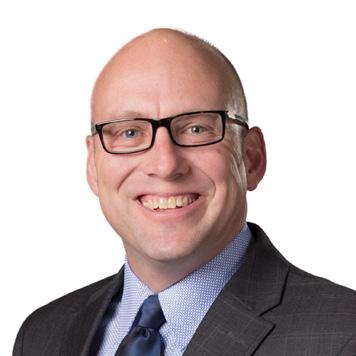
“For our business customers moving money, we have conversations about risk and work together to establish proper systems and procedures to do as much as we can to protect their hard-earned assets. Even on the consumer side, we continually provide education to help our customers act in confidence when it comes to their private information and money. As a bank, we’ve been utilizing the American Bankers Association’s Banks Never Ask That Campaign to supplement our in-house resources and best prepare our customers,” he said.
Chris Wolf, Northern Valley market president at Alerus in Grand Forks, North Dakota, says the banking industry will continue to be competitive in 2025 as interest rates remain somewhat elevated and banks compete for deposits.
“When rates are elevated, it’s important for businesses to ensure they have the right mix of debt versus deposits as they grow, as well as the right mix of deposits, between checking, money markets, and savings options,
CONTINUED ON PAGE 18


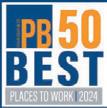
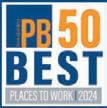


















































































to maximize their potential yields,” Wolf said. “We focus on serving as a financial partner for our clients and that includes always looking out for their best interests. As our clients are planning their budgets and looking ahead, we help make sure they are utilizing the appropriate mix of debt and deposits and maximizing their liquidity.”
Like many sectors, financial organizations face competition for talent, which is a challenge.
“Banking industry professionals, whether new in their career or industry veterans, increasingly want to work at a company where they can make a significant impact. Alerus is fortunate that we have a long history of being a great place to work where team members can grow in their careers while making a positive difference for their clients and our communities,” Wolf said. “And we are a uniquely diversified, employee-owned company. Our team members take great pride in our shared goal of helping clients achieve their financial goals and helping our communities grow and prosper. And, they are fun to be with! Those qualities will help us continue to attract and retain great talent to benefit our clients.”
Artificial intelligence (AI) will continue to transform the banking industry in several ways, including enabling better fraud protection for banks and their clients, improving operational efficiencies, and helping with compliance-related activities, Wolf shared.
“We are investing in several systems this year that will incorporate new capabilities to enhance the client experience and complement our thoughtful approach toward providing the right mix of technology and personal service,” Wolf said.
Cybersecurity is a daily focus for financial companies, which have the responsibility to protect client data.
“Our technology tools and experienced fraud team offer layers of protection to identify fraud attempts and assist clients in the event they fall victim to a fraud attack,” Wolf said. “But we also recognize the importance of educating clients on things they can do to protect themselves. One of
our communication initiatives this year is to regularly provide helpful tips about fraud and alerts on new scam tactics as they are identified. By doing this, we aim to increase awareness about fraud and help our clients avoid falling victim to it.”
Chris Lee is the executive vice president and chief financial officer at Gate City Bank, a member of FDIC and Equal Housing Lender. He says opportunities for business growth remain within reach this year.
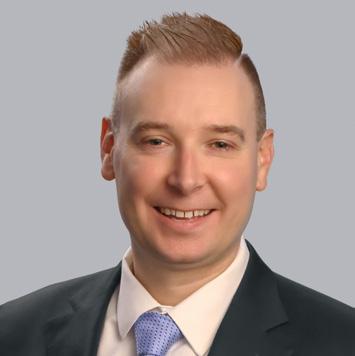
“Whether it’s proactively working with customers on loan renewals to help them achieve success, identifying flexible loan solutions to navigate the changing rate and regulatory environment or actively collaborating on treasury management strategies to maximize cash flow and interest income, we’re committed to providing personalized solutions that address today’s challenges,” Lee said. “By focusing on innovative customer-centered solutions, we help our customers improve their financial position and drive long-term success.”
As North Dakota’s only mutual bank (owned by its depositors and creditors rather than shareholders), Gate City Bank staff takes pride in its unique structure, which allows it to reinvest in its communities and customers, he said.
“This commitment enables us to create innovative solutions that benefit those we serve — focusing on what truly matters: making a positive impact. For example, through our BetterLife Child Care Business Loan program, we’ve invested $10 million since 2023. That includes offering below-market rates and no origination fees – empowering daycare providers across North Dakota and central Minnesota to expand operations, hire staff and upgrade facilities,” Lee said. “This is just one way we’re helping build stronger communities and partnering with our customers in meaningful ways that make a lasting difference.”

BISMARCK, N.D. • North Dakota Gov. Kelly Armstrong along with Commerce Tourism and Marketing Director Sara Otte Coleman released new marketing materials Jan. 22 promoting thousands of the state’s travel businesses and amenities, while inviting visitors and showcasing why North Dakota is a must-see destination, a release states.
Tourism has launched a revitalized “Hello ND” campaign, featuring a fresh look and feel designed to resonate with today’s travelers. The campaign showcases the state’s friendly people, welcoming communities, and abundance of uncrowded outdoor adventures, aligning with the growing trend of slow (more immersive) travel. Building on the success of 2024’s efforts, which generated over 438 million impressions and a 30% increase in website traffic, the campaign will expand its reach through digital advertising, social media, outdoor TV, and sponsorships throughout the year.
“Effective tourism marketing not only attracts visitors but also plays a key role in broader economic development by enhancing
North Dakota’s image as a great place to live, work, and do business,” said Gov. Armstrong in the release. “This new campaign showcases our state’s unique offerings and friendly atmosphere to a wider audience.”
What makes the 2025 “Hello” campaign unique is that it wasn’t scripted. The new materials include new footage captured in 15 locations across the state. The video and print ads showcase the beautiful imagery in a fresh way — with more sweeping aerial views based on feedback from potential visitors.
“What sets North Dakota apart is the authenticity and genuine spirit of our people, and the 2025 “Hello” campaign captures this perfectly,” said Tourism and Marketing Director Sara Otte Coleman. “Through unscripted interactions and breathtaking visuals, including sweeping aerial views, the campaign extends a warm invitation to experience our great state.”
The state’s official Travel Guide is 116 pages featuring beautiful imagery and easy-to-find information to inspire and motivate visitors to experience North Dakota’s outdoor adven-
tures, history, culture, and warm welcoming communities, the release states. Itineraries are an expanded feature, encouraging travelers to extend their stay and experience more. Traveler information is available for more than 250 North Dakota communities. Approximately 225,000 copies will be distributed through traveler requests, inquiry fulfillment, AAA offices, airports, ports of entry, attractions, hotels, rest areas, regional brochure racks and visitor centers.
The 2025 Hunting and Fishing Guide features an overview of North Dakota’s fishing waters, guide and outfitter listings, and hunting seasons details. This publication directs to many resources including North Dakota Game and Fish for detailed information. Approximately 40,000 copies will be distributed.
To order guides or state maps, visit https:// www.ndtourism.com/visitor-information-order-form. Tourism’s partnership with the North Dakota Rural Electric Cooperative will distribute 82,000 guides to subscribers with their February issue of North Dakota Living.
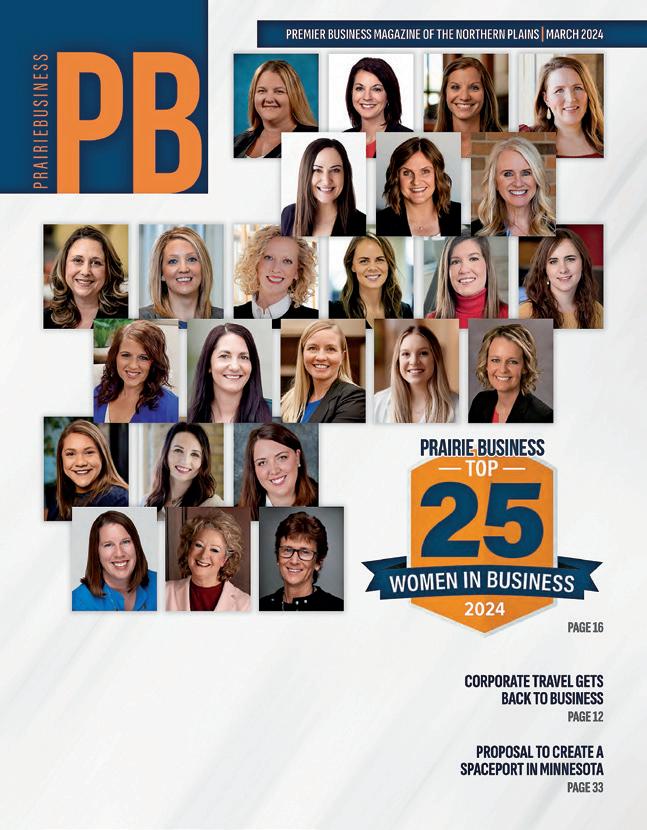
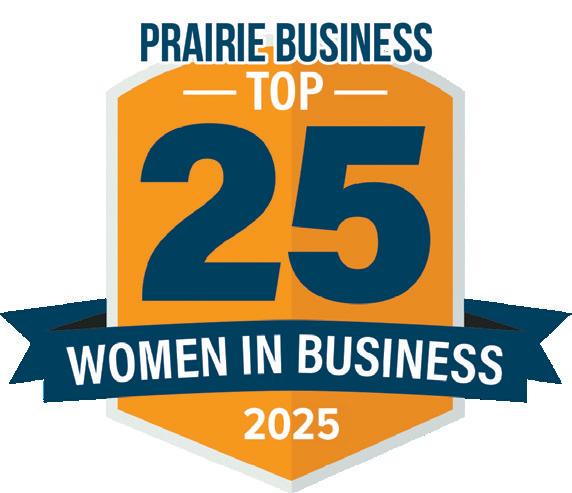


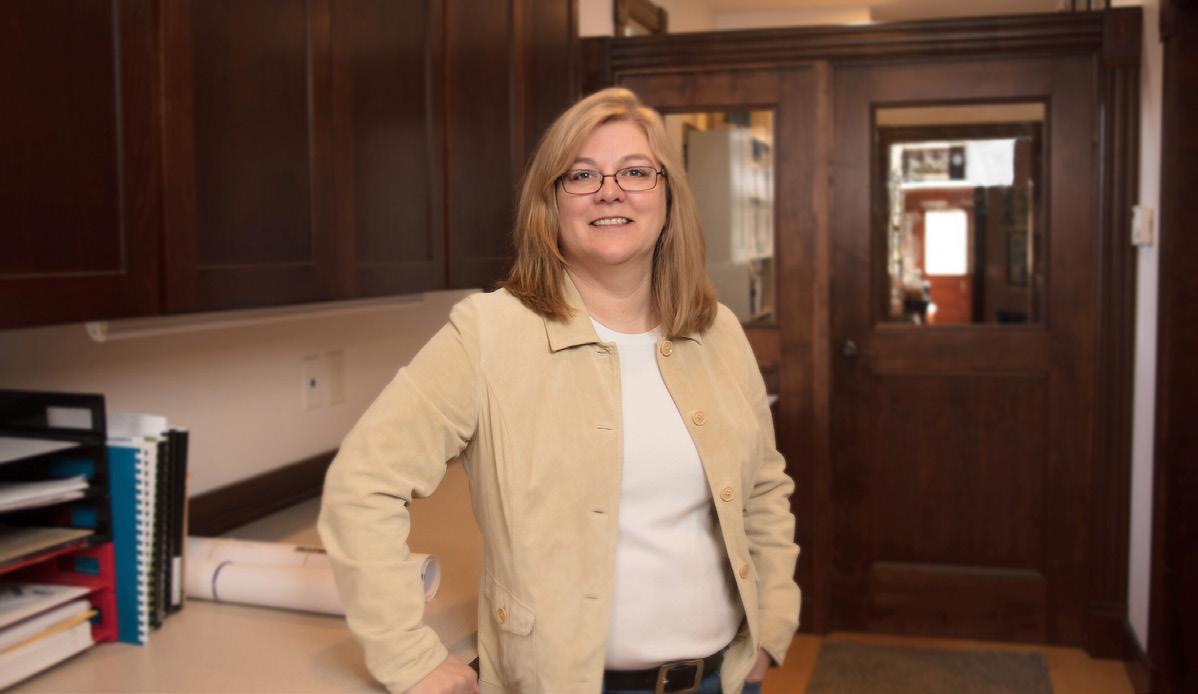
BY CARRIE MCDERMOTT
As a child, Helen White’s hobbies included building houses for her Barbies and constructing tree and snow forts with her brother. In high school, she watched with curiosity the transformation of her school as it was renovated.
“Watching the beautiful renovation and addition unfold and seeing how the new spaces inspired pride in my classmates and our community left a lasting impression on me. To explore further, my parents arranged for me to job shadow a family friend who worked at JLG in Fargo. Seeing her projects and hearing the stories behind the designs was captivating. After touring NDSU’s stunning architecture school, I knew I had found my future,” White said.
She credits her mother for planting the idea of becoming an architect.
“Growing up in a small town without an architectural firm, I hadn’t considered it as a career path until she directly asked me if it was something I’d ever thought about,” White said.
Today, White, AIA, is a licensed architect and an associate project manager in the health-care studio of JLG Architects in Bismarck. She earned
After touring NDSU’s stunning architecture school, I knew I had found my future.
— Helen White, architect and associate project manager with JLG Architects
her master’s degree in architecture from North Dakota State University in 2020 and started working for the firm shortly after.
“Starting my professional journey during the pandemic gave me a deep appreciation for the critical role health-care spaces play in our communities,” she said. “My early focus on healthcare design showed me how architecture can profoundly impact patients, families, and the wider community, and I’ve been passionate about it ever since.”
In 2023, women made up 27% of the total architect population, according to the National Council of Architectural Registration Boards.
Over five years, between 2019 and 2023, the architect population has shown a continuous trend toward greater gender parity. Although still considered a male-dominated field, more resources, programs and partnerships are working to help inspire more girls to become the next generation of architects.
White said the best advice she’s received about the architecture field is, “to be a strong advocate for yourself and your career. This has encouraged me to embrace new challenges, share my ideas with confidence, and seek opportunities that align with my goals and values,” she said.
The fast-paced schedules often driven by financial pressures are some of the challenges White experiences in the field. Most projects require quick turnarounds to meet tight deadlines and minimize the client’s costs, she said.
“While these timelines are a reality, I always strive to take a step back and ensure that our work remains aligned with the original design vision. This approach helps maintain the integrity

and purpose of the project while meeting the client’s goals,” White said.
Bobbi Hepper Olson, founder and principal of Hepper Olson Architects based in Buxton, North Dakota, also became interested in the field in childhood.
“I’ve wanted to be an architect since fifth grade, though at the time I didn’t fully understand what the profession involved — I just knew I was fascinated by buildings,” she said. “Growing up in a small town in North Dakota with a population of about 250, my exposure to architecture was limited. My family didn’t travel much, so most of what I learned came from books and television.”
Her fifth-grade teacher first introduced Hepper Olson to the idea of architecture, sparking an interest, but it was her high school English and art teacher, Mrs. Gomez, who inspired Hepper Olson to pursue a career in it.
“She recognized my passion for art and architecture and encouraged me to explore these interests by assigning English papers related to architectural topics,” Hepper Olson said.
CONTINUED ON PAGE 22
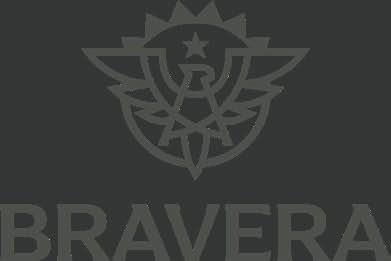
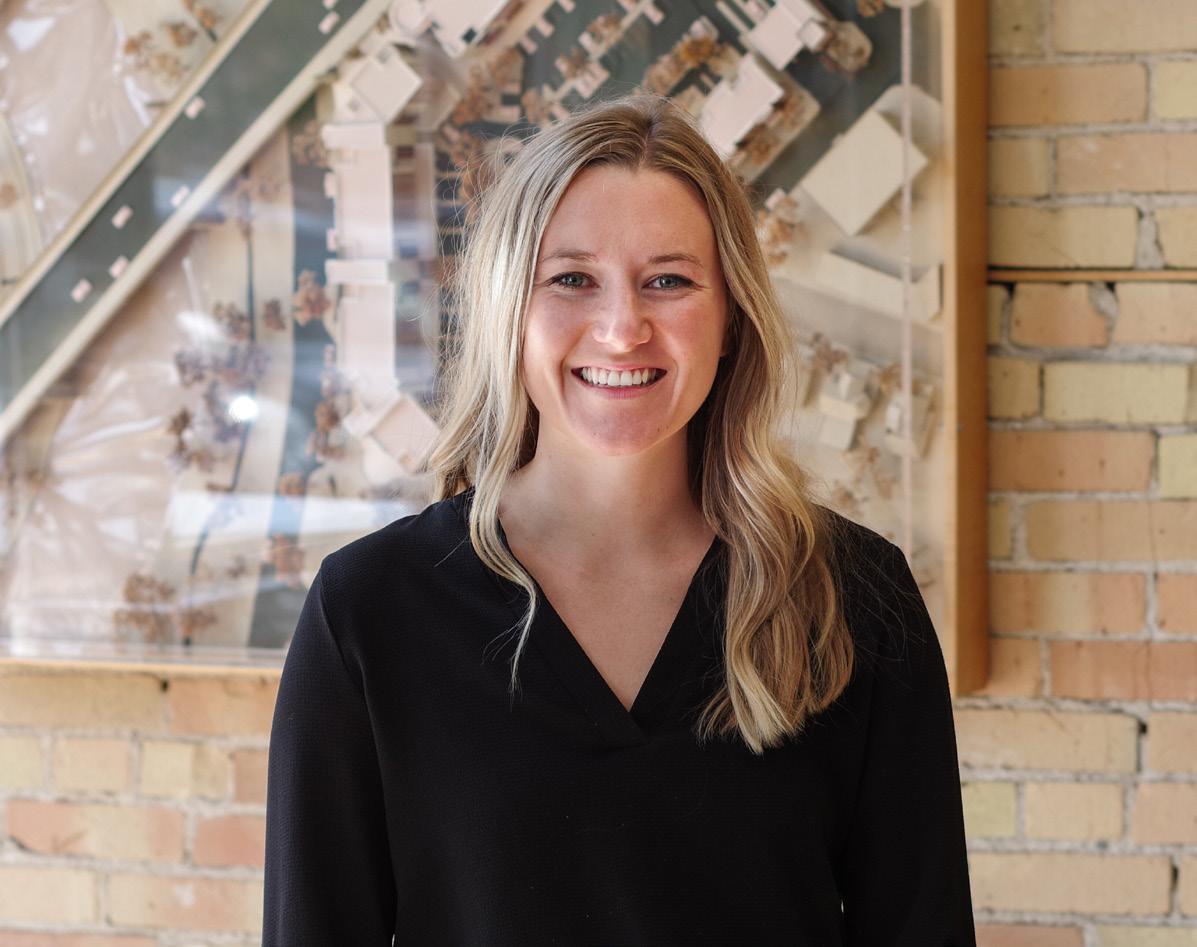
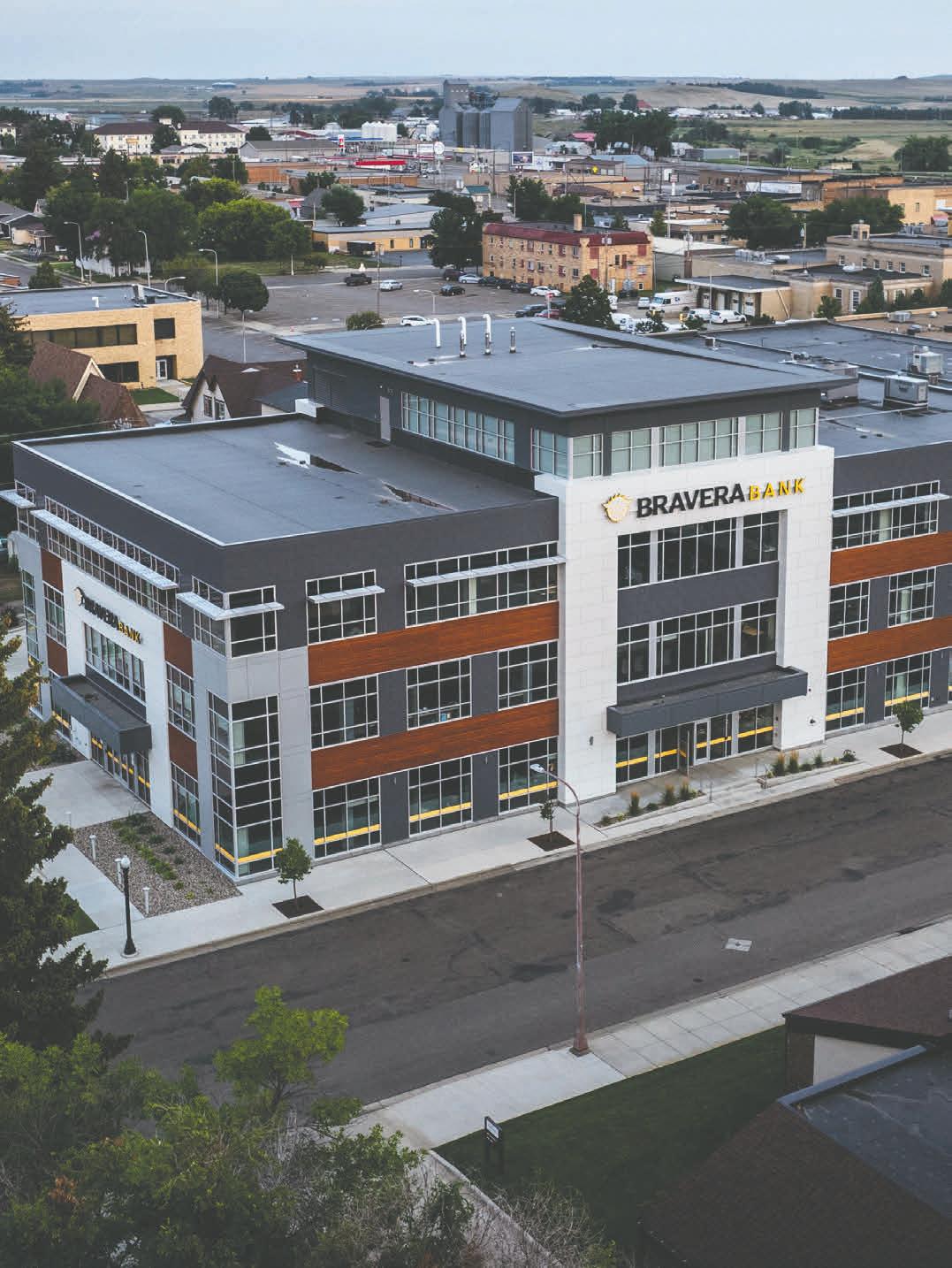

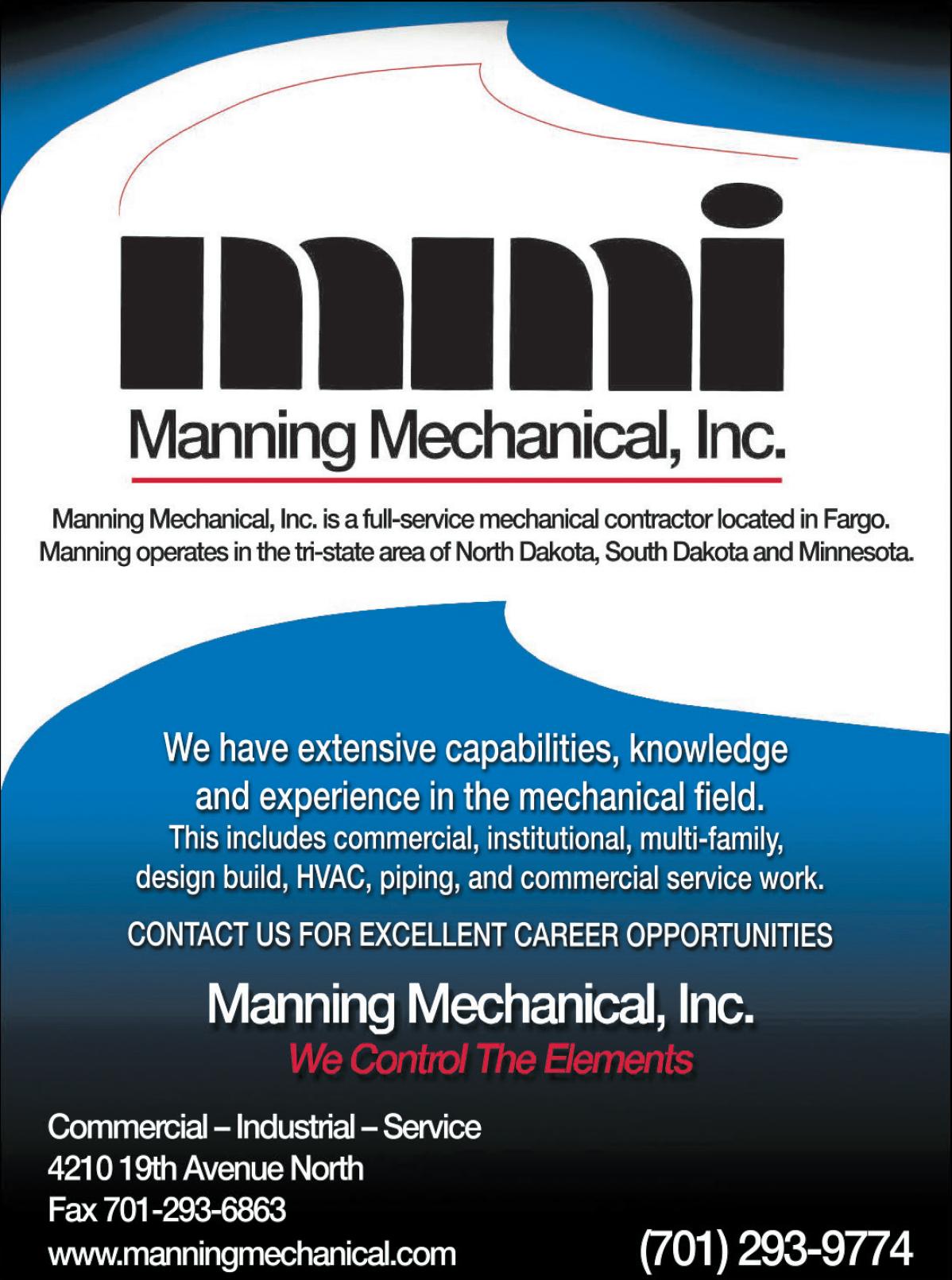

CONTINUED FROM PAGE 21
“She introduced me to the works of Frank Lloyd Wright, sparking my fascination with architectural design. Mrs. Gomez also went above and beyond by arranging an interior design correspondence course through NDSU when I was a junior in high school, providing me with early exposure to design principles.”
Her curiosity and passion for design were the foundations of her journey into the field and early into her career, Hepper Olson worked as an architectural intern at Johnson Laffen Architects (now known as JLG Architects) in Grand Forks.
“(Founders) Gary Johnson and Lonnie Laffen were instrumental mentors — Gary’s dedication to detailing and professionalism, combined with Lonnie’s drive for elevated design, created a dynamic learning environment that deeply shaped
CONTINUED ON PAGE 23
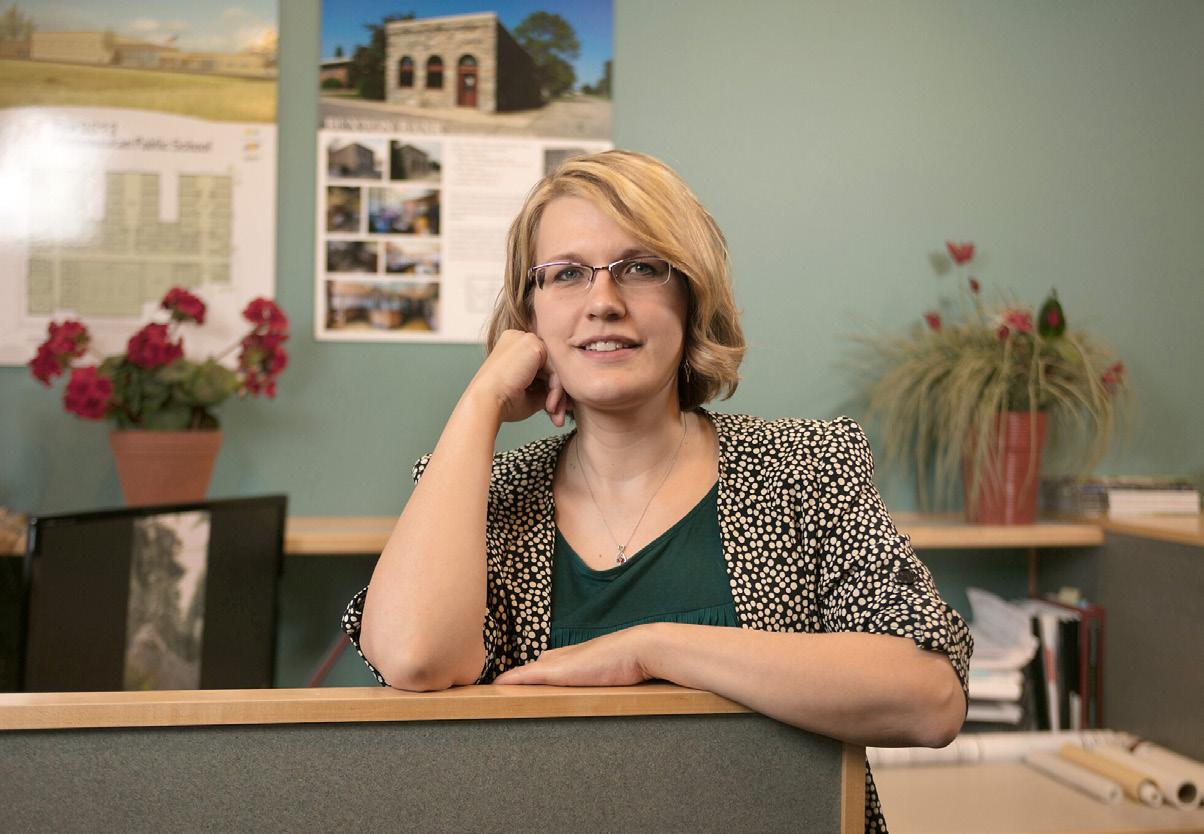



my approach to the architecture profession,” Hepper Olson said.
In addition to meeting deadlines and keeping projects on budget, it’s equally important to maintain strong relationships and clear communication with clients and project teams, she said.
“Successful projects come from a balance of efficient project management and thoughtful design,” Hepper Olson said.
Her favorite aspect of the job is seeing “a design on paper come to life as a fully realized facility that reflects the client’s vision,” she said. “I also have a deep appreciation for historic preservation and renovation work. I enjoy researching a building’s history and exploring the original construction methods and innovations used over the years. This process is both fascinating and educational, continually expanding my understanding of different building types and how materials and techniques have evolved over time.”
Erin Peterson is a staff architect with Hepper Olson Architects who started out as a drafter at a small firm in St. Cloud, Minnesota. She went from a technical college to architecture school where she learned about editing designs, which can
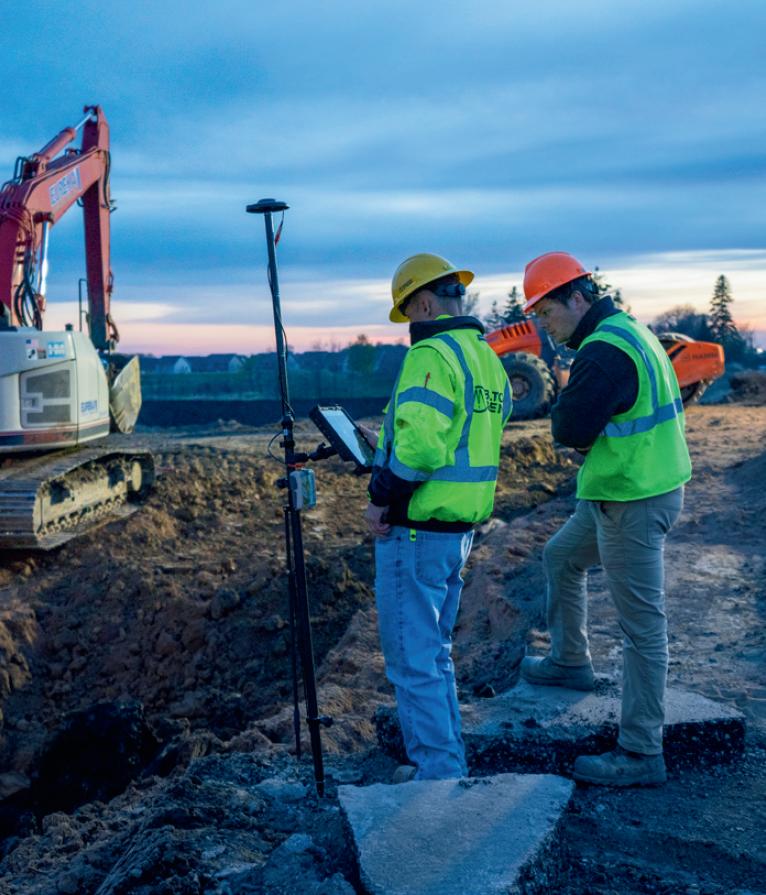
— Bobbi Hepper Olson, founder and principal of Hepper Olson Architects
change at any point in the process depending on the needs of the client.
“Growing up I was always interested in art and was intrigued that it was possible to take a two-dimensional drawing one step further by creating a building that can be developed from an idea,” Peterson said. “My parents were building a house throughout my childhood and the progression of how things go together to make a finished product was a daily occurrence. This taught me early on how to look beyond what is in front of you to envision the finished product.”
CONTINUED ON PAGE 24 Successful




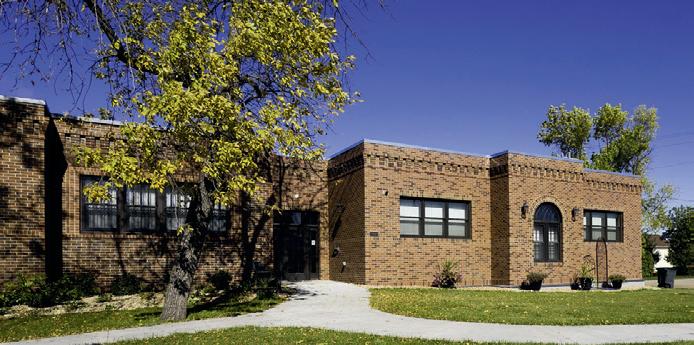
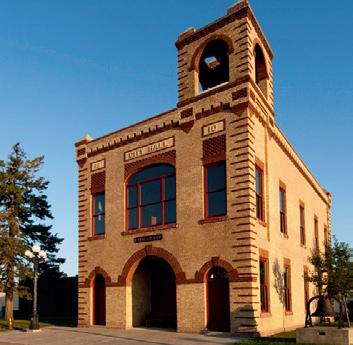

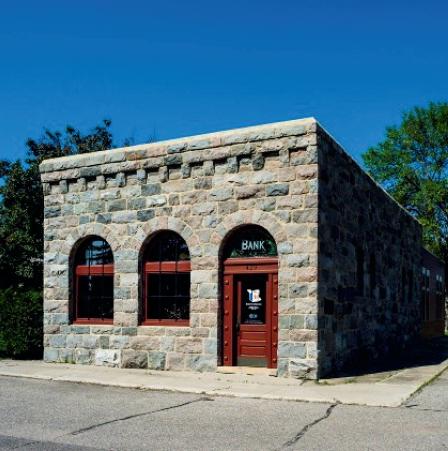
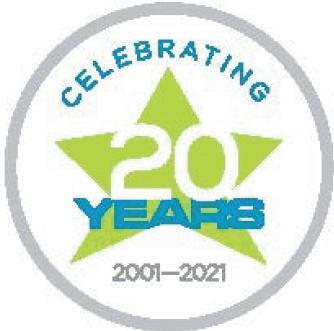
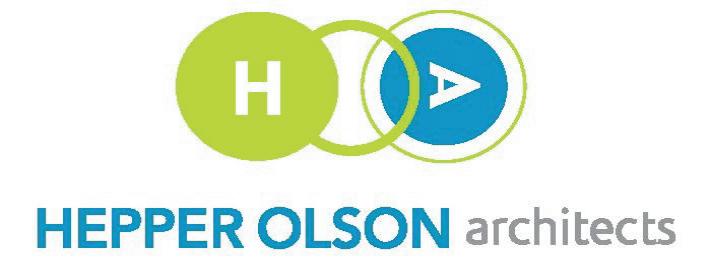

CONTINUED FROM PAGE 23
The best advice she’s received about the field is when in doubt, keep it simple.
“Typically, if things are not working out, if there is too much going on, a step back is needed. A simpler form may show itself as the ideas are being worked out,” she said.
One of the biggest challenges architects face is when they’re brought in at the tail end of the design process.
“Many do not recognize the need for the architect until the project has been taken too far down the path where backtracking is needed regarding materials selected and how the building functions,” she said.
She said it’s never too early to get the design team involved, whether the client is looking at a large picture masterplan of a facility in 5-10 years, or considering how to address a current specific need.
“Architects are well equipped to look at largescale ideas while incorporating the specific need that is unique to each project,” Peterson said.
CONTINUED ON PAGE 25
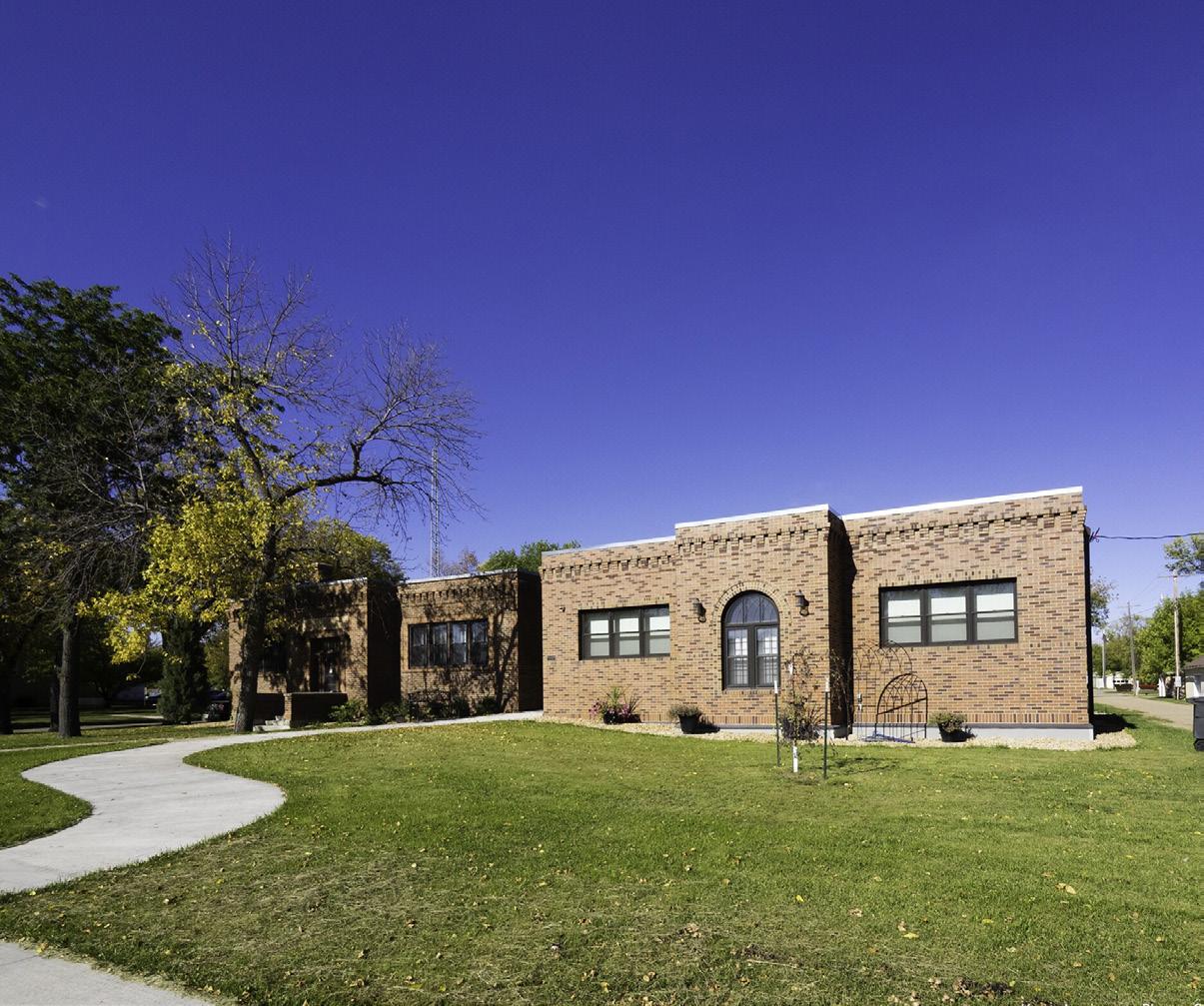


CONTINUED FROM PAGE 24
In Sioux Falls, South Dakota, Terri Miller, AIA, CDT, NCARB, is the principal architect at Archi tecture Incorporated. When she was just 10, her parents decided to design and build their own home, and through that process, Miller was in trigued. Her father drew up plans and explained what she was looking at, and she could easily visualize it. She and her brother even helped the construction crew that summer, giving her another angle to see how a home comes together.

During high school, she excelled in the drafting class, finishing the workbooks in record time. Her instructor was also the shop teacher, and Miller ended up drafting the plans for his house. Miller also created plans for the school’s landscape class, which provided volunteer landscaping work in the community.
“By the end of the year, I had run out of tasks to do. My teacher introduced me to other programs and ideas and helped me realize that this could be a career. It took my parents and my grandmother to convince me to officially enroll,” she said.
Miller hadn’t seriously considered the architecture or construction fields as they were so male-dominated, but with her family’s encouragement, she began her education in architecture.
“Of course, I had to think about it for a while, then buckle down and go for it. My mom helped me find the right path and assured me my mechanical mind would serve me well — I am my father’s daughter,” she said.
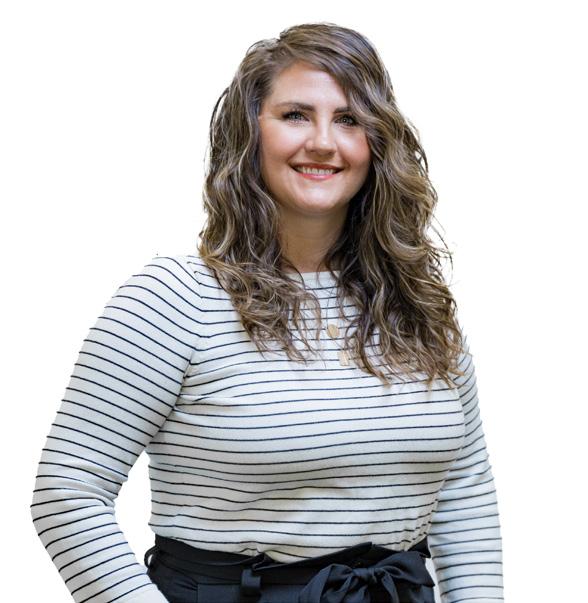
MILLER,
NCARB, IS THE PRINCIPAL ARCHITECT AT ARCHITECTURE INCORPORATED IN SIOUX FALLS, SOUTH DAKOTA. / COURTESY ARCHITECTURE INCORPORATED
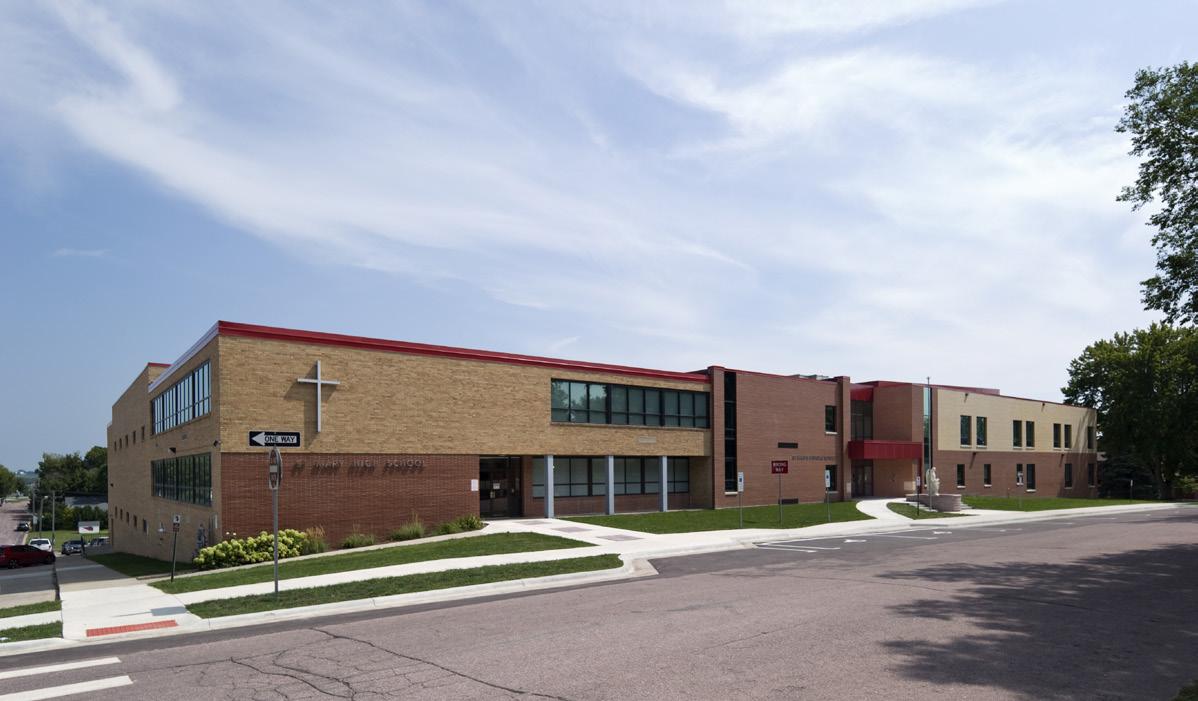
ARCHITECTURE INCORPORATED WORKED ON THE ST. MARY’S SCHOOL ADDITION AND RENOVATION IN DELL RAPIDS, SOUTH DAKOTA. / COURTESY BRIAN ROTERT WITH CIPHER IMAGING
One of her favorite projects as an architect has been the Dell Rapids St. Mary School addition and renovation in Dell Rapids, South Dakota. Her team collaborated with the school for a long time, overcame numerous challenges, and ultimately surpassed the client’s expectations.
The most useful advice she’s been given is “listen to learn, because there’s always more to understand.”
“The code is a rule book — if you know the rules, you know how to play by them,” Miller said.
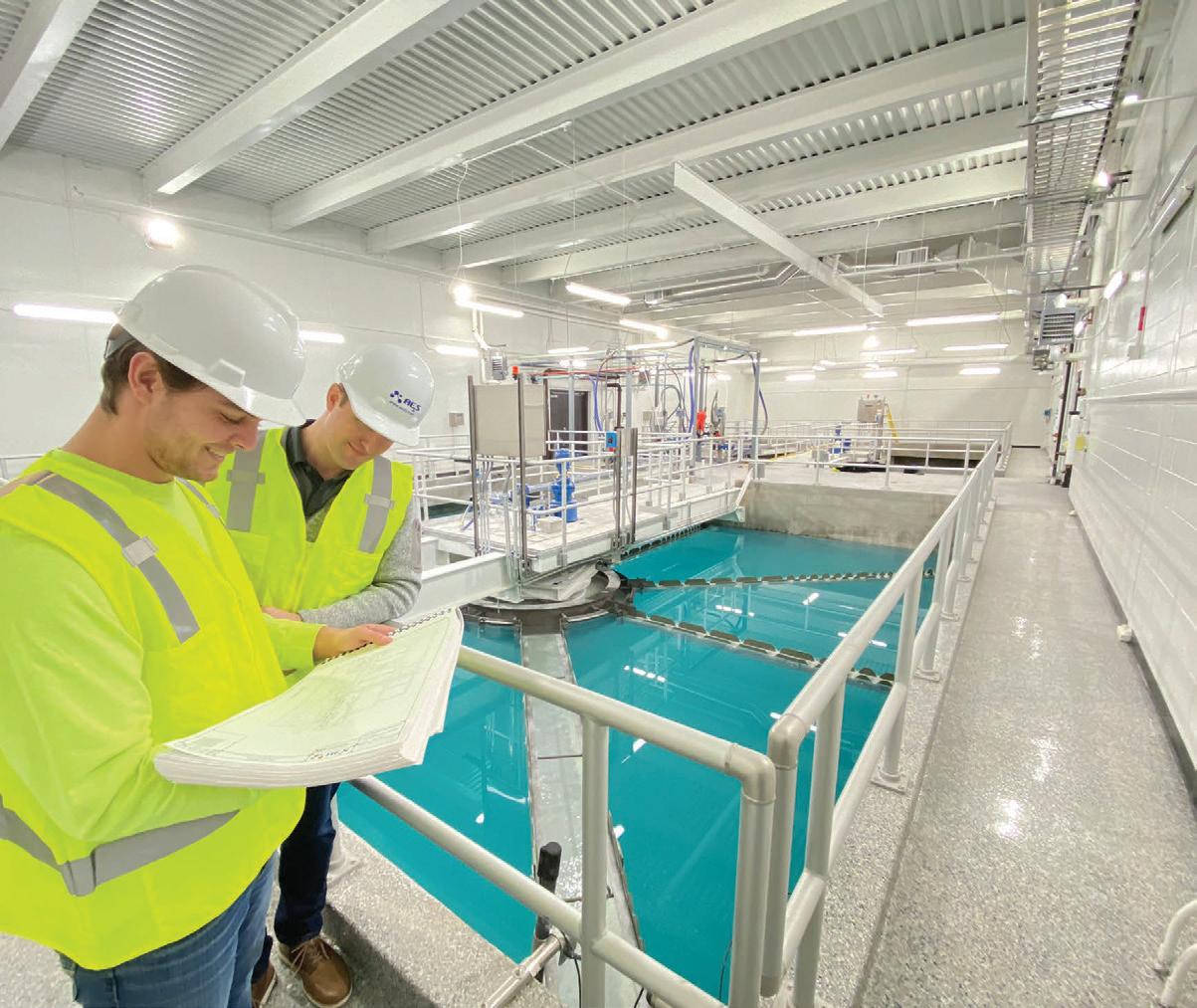

At our very core, AE2S is all about people. Beyond engineering, we are committed to empowering our clients, employee-owners, and all those around us to develop a vision for a better tomorrow.
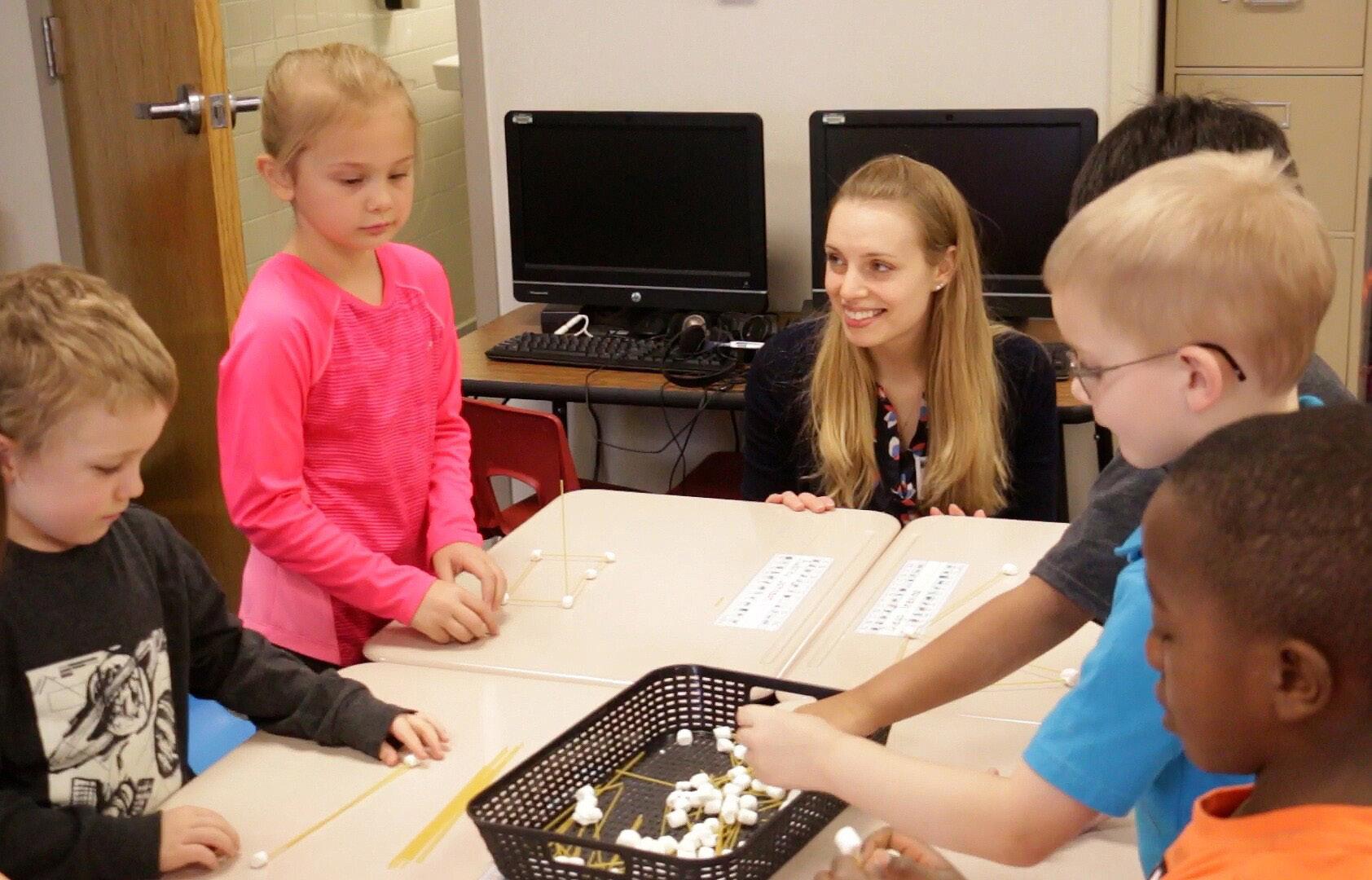
PROFESSIONAL ENGINEER ALEXA DUCIOAME, WITH MOORE ENGINEERING, WORKS WITH ELEMENTARY STUDENTS ON A STEM PROJECT. / COURTESY MOORE ENGINEERING
BY CARRIE MCDERMOTT
Growing up in Minnesota, Wylie Wenschlag was always drawn to building things, whether it was forts in the woods, home improvement projects or playing with LEGOs. Wenschlag, a professional engineer (PE), is the Ulteig Substation director in Detroit Lakes, Minnesota.
“My passion for creating, combined with excelling in math and science, guided me toward engineering. A career assessment in eighth grade pointed me toward mechanical or civil engineering, and I chose civil engineering because it aligned with my interests,” he said. “The affordability and strong reputation of NDSU made it the perfect place to pursue my degree. What I love most about my career is collaborating with talented coworkers to design and implement projects that make a real difference. Providing reliable energy is vital in today’s world and knowing that my work helps power communities is deeply satisfying.”
Ulteig is one of many regional engineering firms that connect with K-12 students through STEM (science, technology, engineering and math) programs and activities.
“Part of fostering the next generation of engineers is finding ways to make early connections with students. Providing opportunities for younger students to explore potential career paths can generate interest early and prepare them as they consider postsecondary options,” Wenschlag said.
Last year, Ulteig’s Fargo office partnered with North Dakota State University to host a crew of middle-school students for Introduce a Girl to Engineering Day. The event connected students with engineering leaders, he said, who offered hands-on activities and demonstrated the impact engineering has on communities. At the higher education level, Ulteig supports and offers scholarships for students including the Mel Ulteig Scholarship awarded to an NDSU student majoring in electrical engineering or civil engineering. Another scholarship is offered through Dunwoody College of Technology in Minneapolis for CADD technicians and field surveyors, with a focus on recruiting women. The firm also works with local chapters of organizations such as the Society of Women Engineers to raise the profile of
engineering career options, attend career fairs, and offer resources such as resume reviews.
Overall employment in architecture and engineering occupations is projected to grow faster than the average for all occupations from 2023 to 2033, according to the U.S. Bureau of Labor Statistics. Nearly 328,000 civil engineers are employed in the country, with a median hourly wage of $48.64. There’s currently more civil engineering work than civil engineers to do it, according to the American Society of Civil Engineers. Connecting with potential future engineers is crucial for the sector, which is why partnerships with school programs are so important.
Project Manager Alexa R. Ducioame, PE, CFM, at Moore Engineering in West Fargo, is passionate about introducing students from diverse backgrounds to STEM.
“I am grateful to have formed meaningful partnerships with several institutions working toward that same goal. Each January, we visit kindergarten classes in West Fargo to engage young learners with engineering concepts,” Ducioame said.
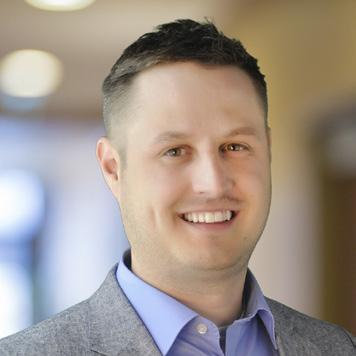
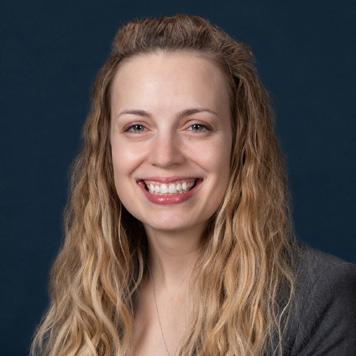
The firm also volunteers for events such as Introduce a Girl to Engineering Day with NDSU and the Girl Scouts BIG Event. In the past, they’ve also attended Tech Savvy and STEMtastic in Jamestown, North Dakota, organized by AAUW (American Association of University Women).
“My favorite initiative is BrainSTEM, which I founded in late 2015 in collaboration with the FM AAUW and NDSU Engineering. BrainSTEM’s goal is to promote diversity in STEM while addressing prejudice and bias,” she
CONTINUED ON PAGE 28
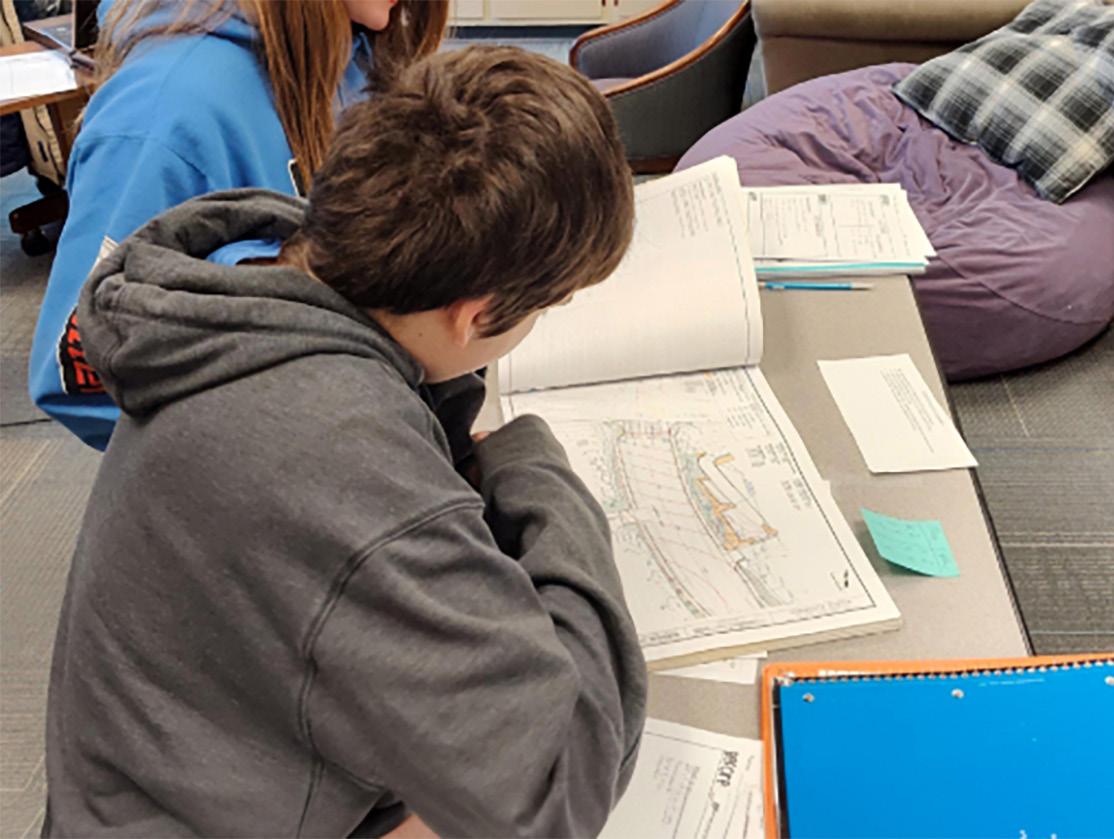
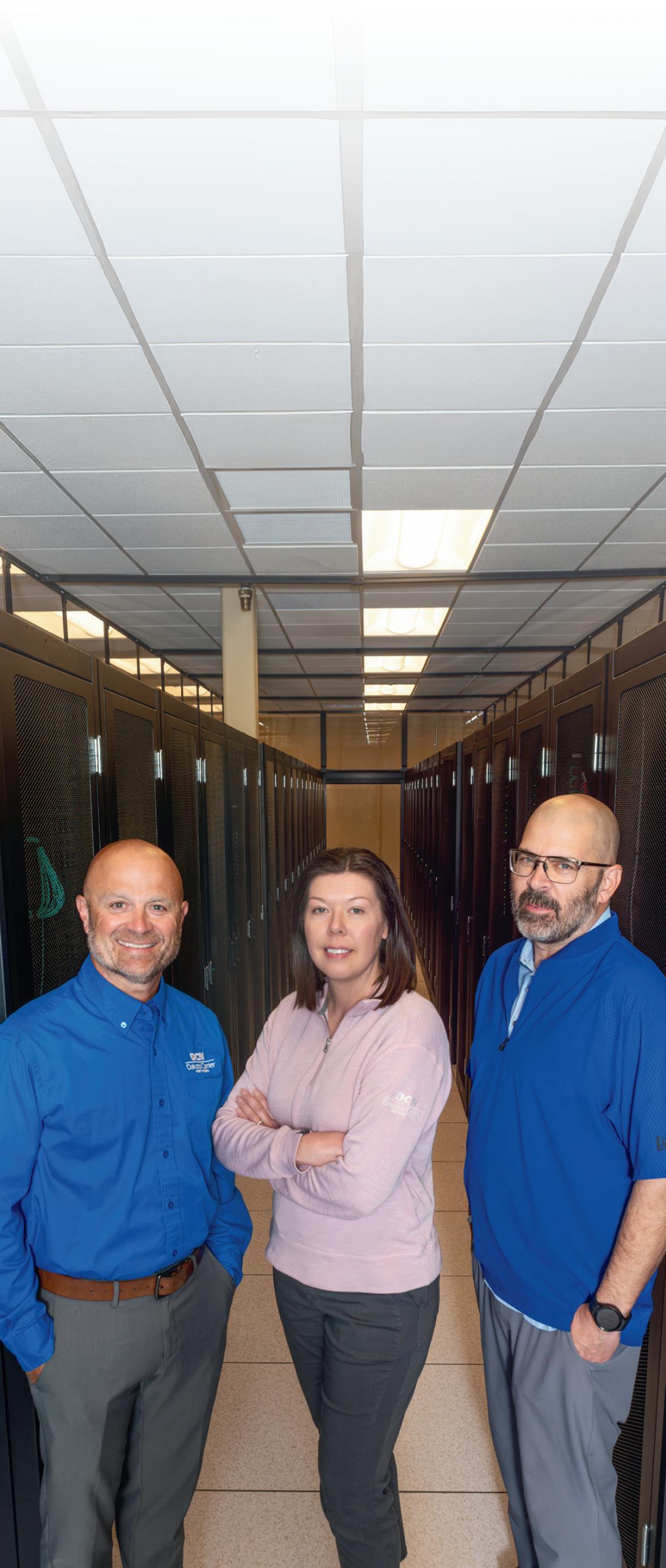
Whether your business is looking for a secure place to store its data or needs to connect locations across the state or across the country, DCN is the partner you’ve been looking for.
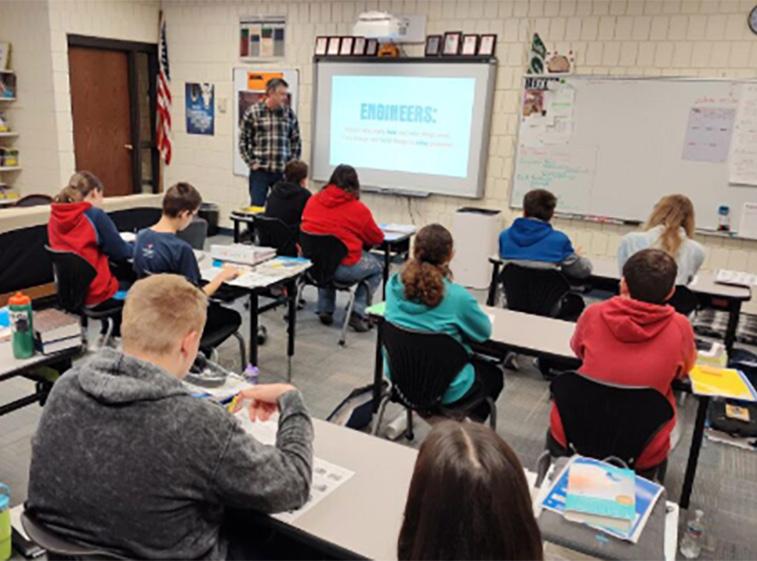
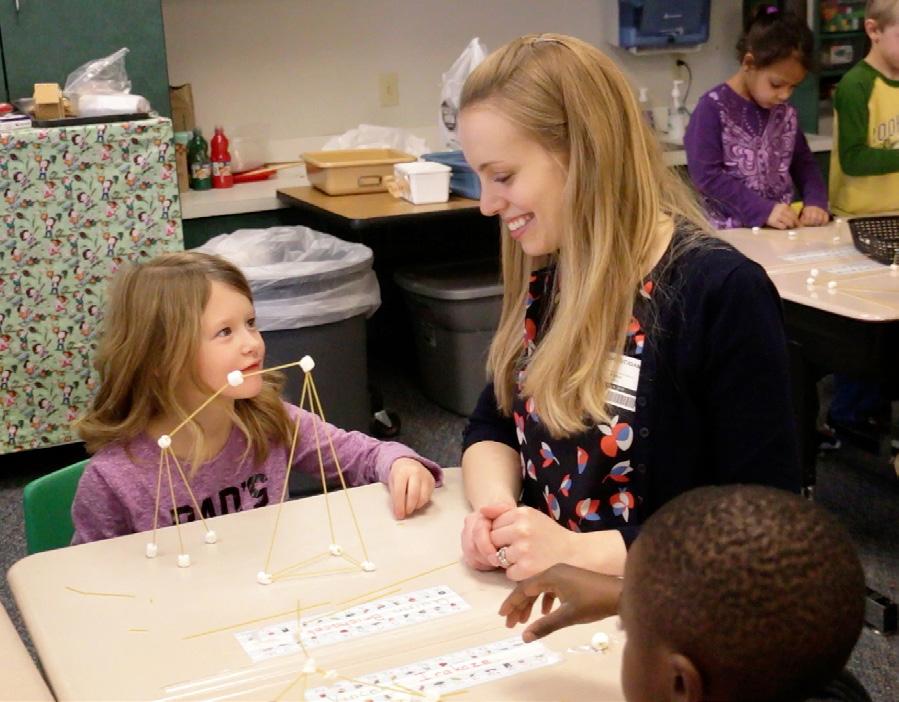
said. “Each year, we invite an entire seventh-grade class from a lower-income school, with all of our workshop leaders being from underrepresented groups in STEM. The event has grown and evolved over time, and it is now owned by ND ASCE (North Dakota section of the American Society of Civil Engineers).”
As a civil engineer, I enjoy working on projects that help people’s everyday lives and being part of something that will benefit a community for decades.
— Eric Landis, engineer with KLJ
“Through my work on the F-M Diversion project, I collaborated with the Diversion Authority to bring UND students studying river modeling to Fargo for a presentation and tour of the project last spring. It was a unique and valuable opportunity for them to engage with a once-in-a-lifetime project firsthand,” she said.
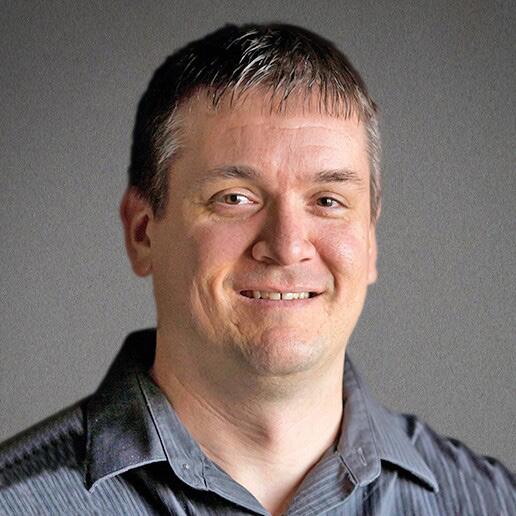
Growing up in Grand Forks, Ducioame was a child when the city experienced a devastating flood and saw her home’s basement filled with water, while other homes and buildings were completely flooded. Seeing so much destruction from the rising water helped shape her path and passion for helping communities prevent similar disasters.
“At Moore, I have the opportunity to work on projects designed to prevent flooding and reduce its impact on communities. Beyond the physical damage, living in floodplains creates a financial burden for homeowners due to the cost of flood insurance,” she said. “I’ve collaborated with communities to develop projects that help them get removed from FEMA floodplains, alleviating that stress for many homeowners.”
In Sioux Falls, South Dakota, Eric Landis, PE, is a civil engineer with KLJ. He has spoken to middle school science students about careers in engineering as part of the company’s outreach. KLJ partners with BIO Girls STEM programs and the Girls Scouts to provide meaningful experiences, he said.
“We also offer job shadowing opportunities, giving students a chance to immerse themselves in the workplace environment, learn about different engineering roles, and observe real-world problem-solving,” Landis said. “Our employees are deeply involved in the community, delivering presentations, doing hands-on activities, and driving informational sessions on the engineering industry at schools to students ranging from elementary to high school.”
Partnerships with higher education institutions like University of Mary, South Dakota School of Mines, and the University of Minnesota, among others, connect the firm’s staff and internship opportunities across the company’s office locations, providing students with hands-on experience and exposure to real-world engineering projects. CONTINUED FROM PAGE 27
Ducioame serves on the University of North Dakota’s Civil Engineering Advisory Board and is connected to both the UND and NDSU chapters of the ASCE and the Society of Women Engineers. Her primary interaction with higher-ed students comes through internship opportunities at her firm.
CONTINUED ON PAGE 29


“These initiatives allow us to mentor future professionals, support their academic growth, and showcase the rewarding career paths available in engineering,” Landis said.
A career in engineering seemed to be the logical path for Landis, since he excelled at math and science in school and enjoyed building things. A few of the recent projects he’s worked on at KLJ include the parking lot design for the newly opened parking ramp at the Sioux Falls Regional Airport, the design for the Egan Avenue street and utility reconstruction project in Madison, South Dakota, and site designs for the Department of Health Lab in Pierre, South Dakota, and a new law enforcement center for Sisseton Wahpeton Oyate in South Dakota.
“As a civil engineer, I enjoy working on projects that help people’s everyday lives and being a part of something that will benefit a community for decades. I also enjoy the problem-solving part of engineering, where clients come to us with an issue and we get to come up with a solution to address it,” he said.
Engineering Week is Feb. 16-22 this year and Introduce a Girl to Engineering Day is Feb. 20.































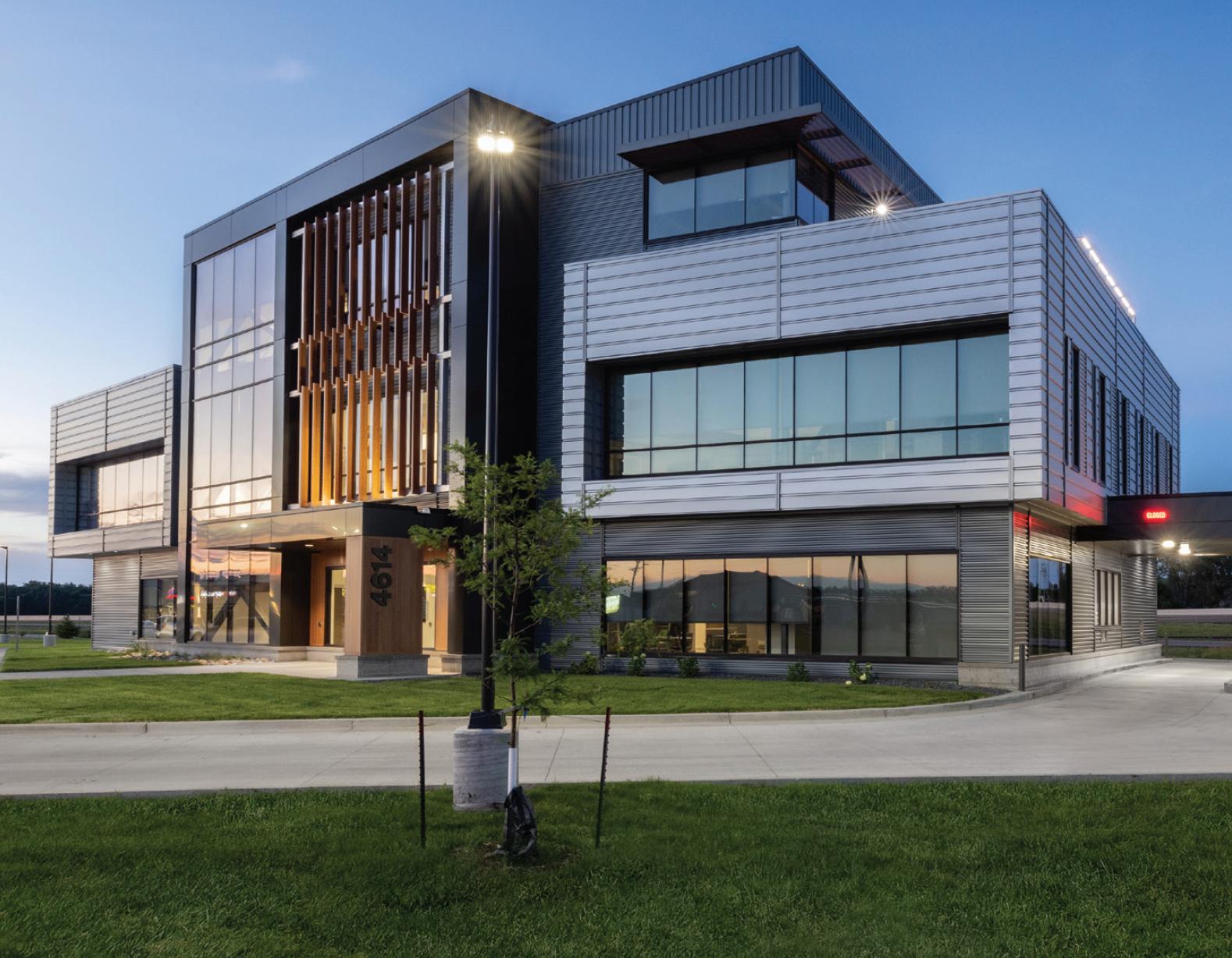
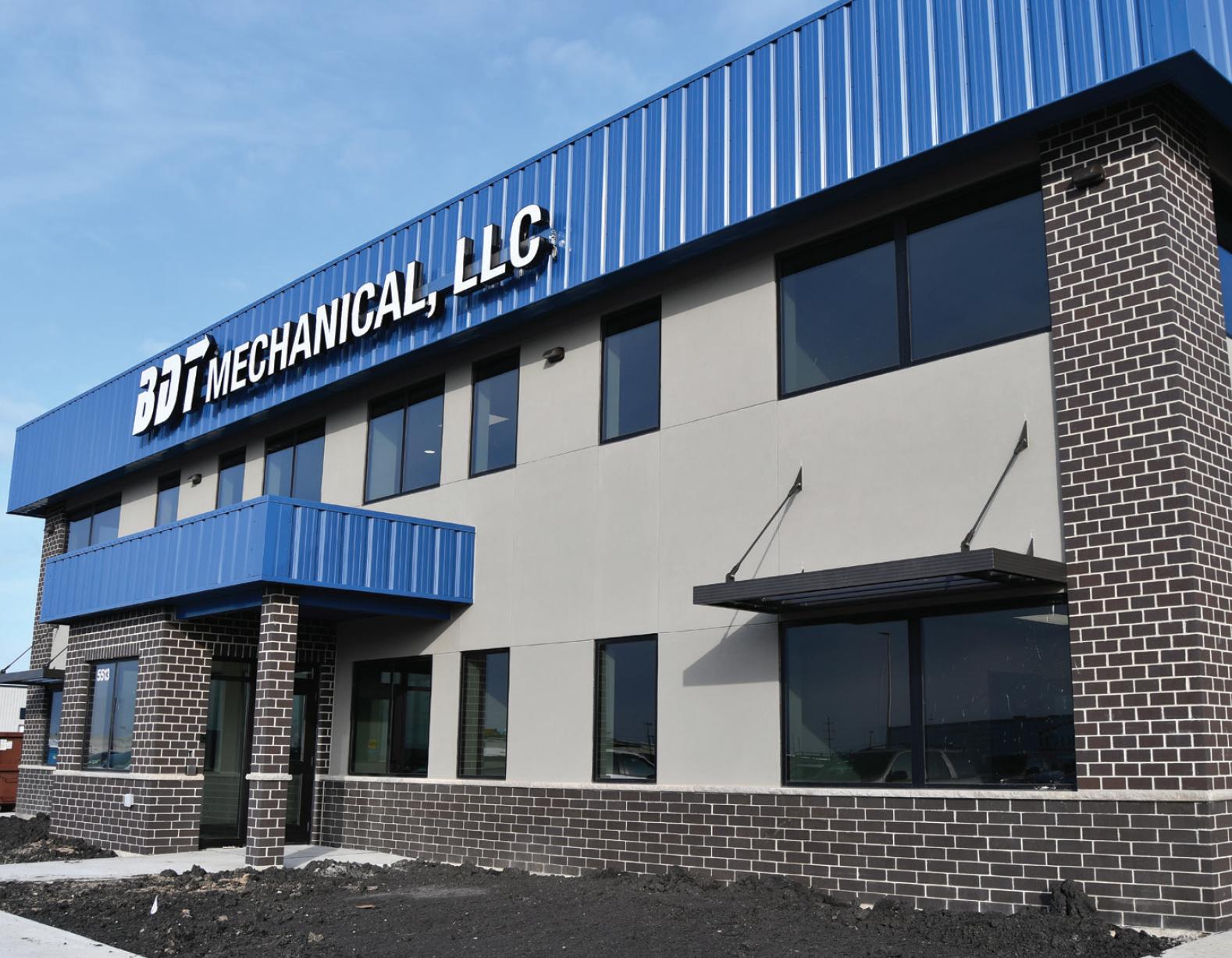
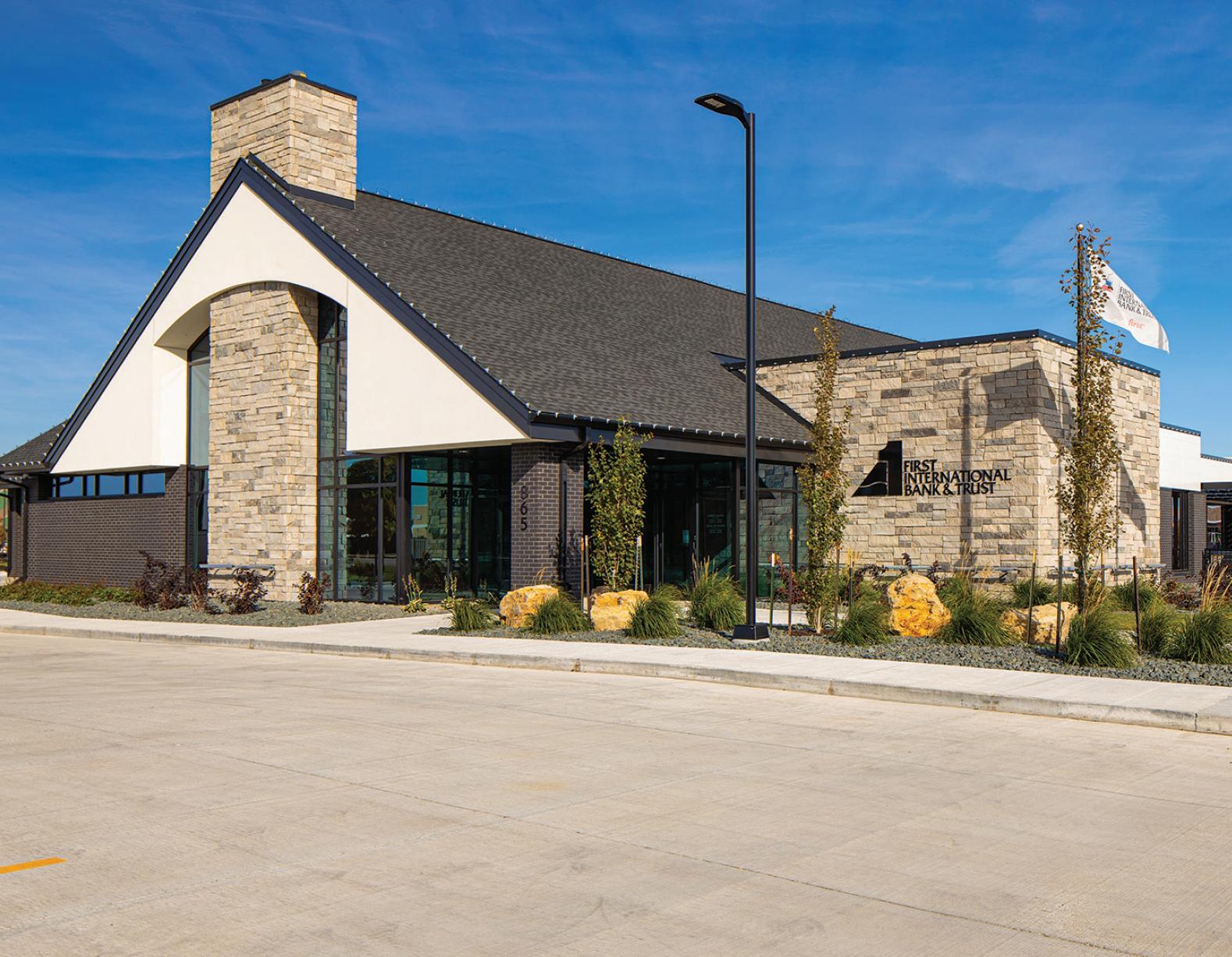

RAPID CITY, S.D. • TSP, Inc., a multidisciplinary leader in architecture, engineering, planning, and interior design, is excited to announce the opening of its new office in Rapid City. This marks a significant milestone in the firm’s long-standing relationship with the Black Hills region, where it has provided trusted expertise for over 50 years.
“We’ve had the privilege of contributing to the region’s growth and transformation, and our new office further strengthens our commitment to designing its future,” said Mark Averett, TSP principal and Rapid City office leader, in a release. “As we continue to grow alongside the community, we’re excited to offer even more innovative solutions and resources to help shape its success.”
The new office is located at 1051 Fairmont Boulevard in Rapid City. Constructed on an elevated site with a scenic view of the community, the 5,600-square-foot facility is located just west of the main Monument Health campus and easily visible from Mount Rushmore Road.
The new office was intentionally designed by TSP to enhance the team’s multidisciplinary and collaborative work. It includes a mezzanine to accommodate an alternate work environment and informal meeting and social space. A movable wall system enables the conference room to be expanded for larger gatherings, the release states.
For clients and visitors, the new office offers convenience, including ample parking, access to main thoroughfares, improved visibility, and an impressive view of Rapid City.
Scull Construction Service provided general contracting services for the project.
Established in South Dakota, TSP’s history with Black Hills-based clients stretches back to the mid-1930s when company founder Harold Spitznagel designed Sylvan Lake Lodge at Custer State Park.
Other early work ranged from residential, military housing during World War II, and liturgical projects – including Trinity Lutheran Church and the Chapel in the Hills, dedicated in 1969.
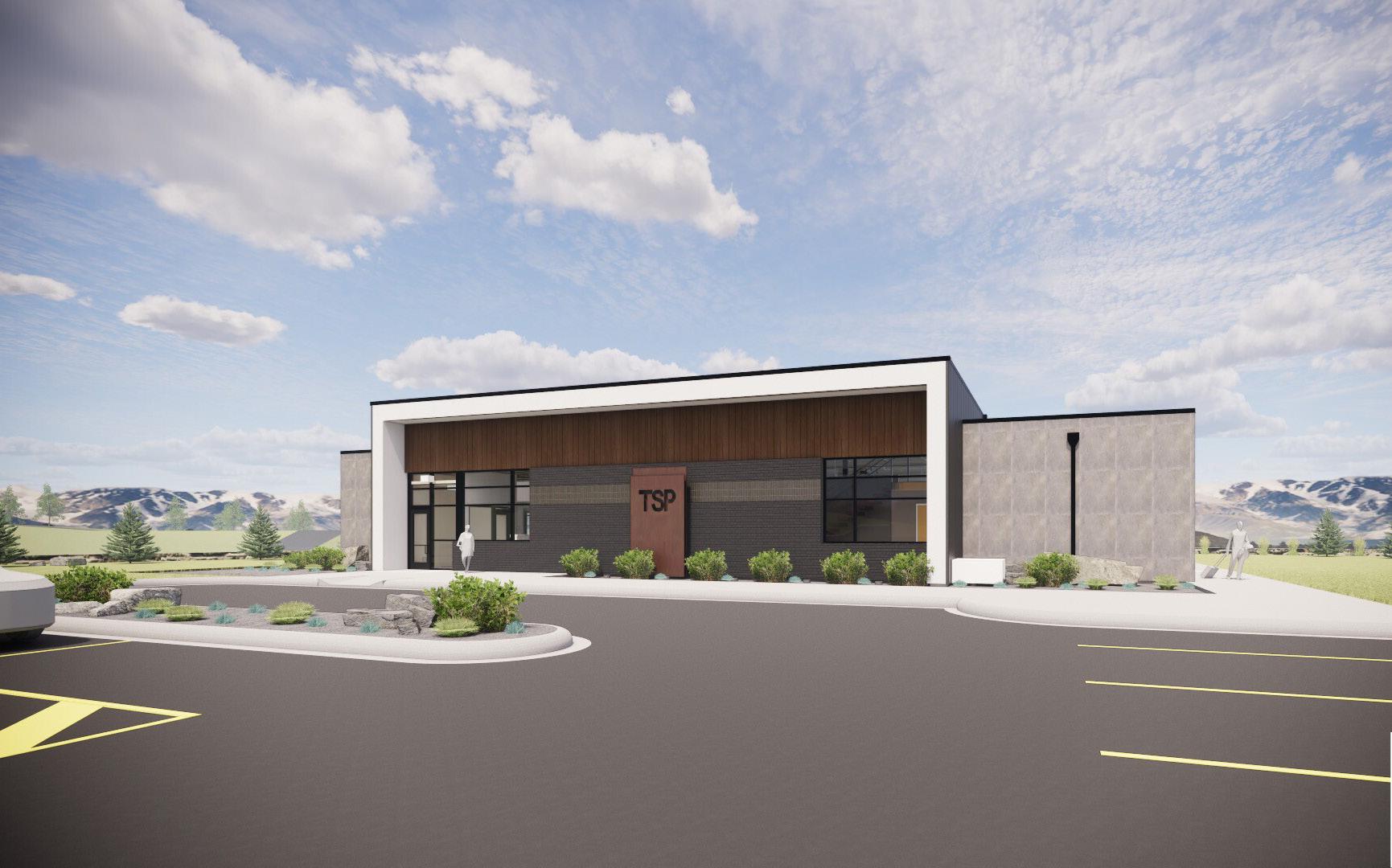
PIERRE, S.D. • The South Dakota Governor’s Tourism Advisory Board has selected its officers for 2025.
Ann Lesch of De Smet was reelected to the board president during a meeting in Pierre. Caleb Arceneaux of Rapid City was reelected vice president.
“The South Dakota Governor’s Tourism Advisory Board is composed of top-notch leaders who excel in their respective industries and provide steadfast leadership and commitment to the state’s tourism industry,” said James Hagen, secretary of the Department of Tourism, in a release. “Their leadership, experience, counsel and unwavering support is felt by our entire industry.”
The Tourism Advisory Board is appointed by the governor and includes members of the tourism
industry and citizen representatives from across the state. Board members serve as liaisons and advocates for the tourism industry as well as the Department of Tourism.
Current Tourism Advisory Board members include Caleb Arceneaux, Rapid City; Tom Biegler, Sioux Falls; John Brockelsby, Rapid City; Ann Lesch, De Smet; Julie Ranum, Watertown; Val Rausch, Big Stone City; Carmen Schramm, Yankton; Frank Smith, Gettysburg; Ivan Sorbel, Kyle; Kristi Wagner, Whitewood; and Gwyn Wathen, Hill City.
The South Dakota Department of Tourism is comprised of Travel South Dakota and the South Dakota Arts Council. The department is led by Secretary James D. Hagen.

THE SOUTH DAKOTA GOVERNOR’S TOURISM ADVISORY BOARD FROM LEFT: FRANK SMITH, GETTYSBURG; KRISTI WAGNER, WHITEWOOD; GWYN WATHEN, HILL CITY; CALEB ARCENEAUX, RAPID CITY; ANN LESCH, DE SMET; JOHN BROCKELSBY, RAPID CITY; JULIE RANUM, WATERTOWN; VAL RAUSCH, BIG STONE CITY; CARMEN SCHRAMM, YANKTON. TOM BIEGLER, SIOUX FALLS; IVAN SORBEL, KYLE. / COURTESY BYRON BANASIAK
I
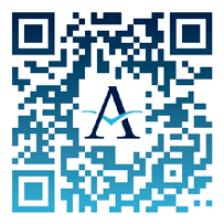
School: NDSU
Degree: Bachelor of Fine Art
Graduation: May 2025
Career path: Continue to grad school for MFA
There’s truly an encouragement of interdisciplinary work there.

BY CARRIE MCDERMOTT
North Dakota State University art student
Cody Loud already has a master’s degree in architecture and is working on completing his bachelor’s degree in art before moving on to grad school to earn an MFA. As someone who’s always been interested in art, he hopes to eventually find a career that will make use of both degrees.
Loud, from St. Francis, Minnesota, first joined NDSU to focus on architecture. When one of his professors in the architecture program asked him why he wasn’t majoring in art after seeing his renditions, he decided to go for a double major and focus on art, too.
“I feel so passionate about both majors that I know I want to pursue a master’s in both, so I just recently applied for grad schools and MFA programs,” he said.
NDSU’s architecture program is one of the few in the Midwest that’s a five-year program.
CONTINUED ON PAGE 33
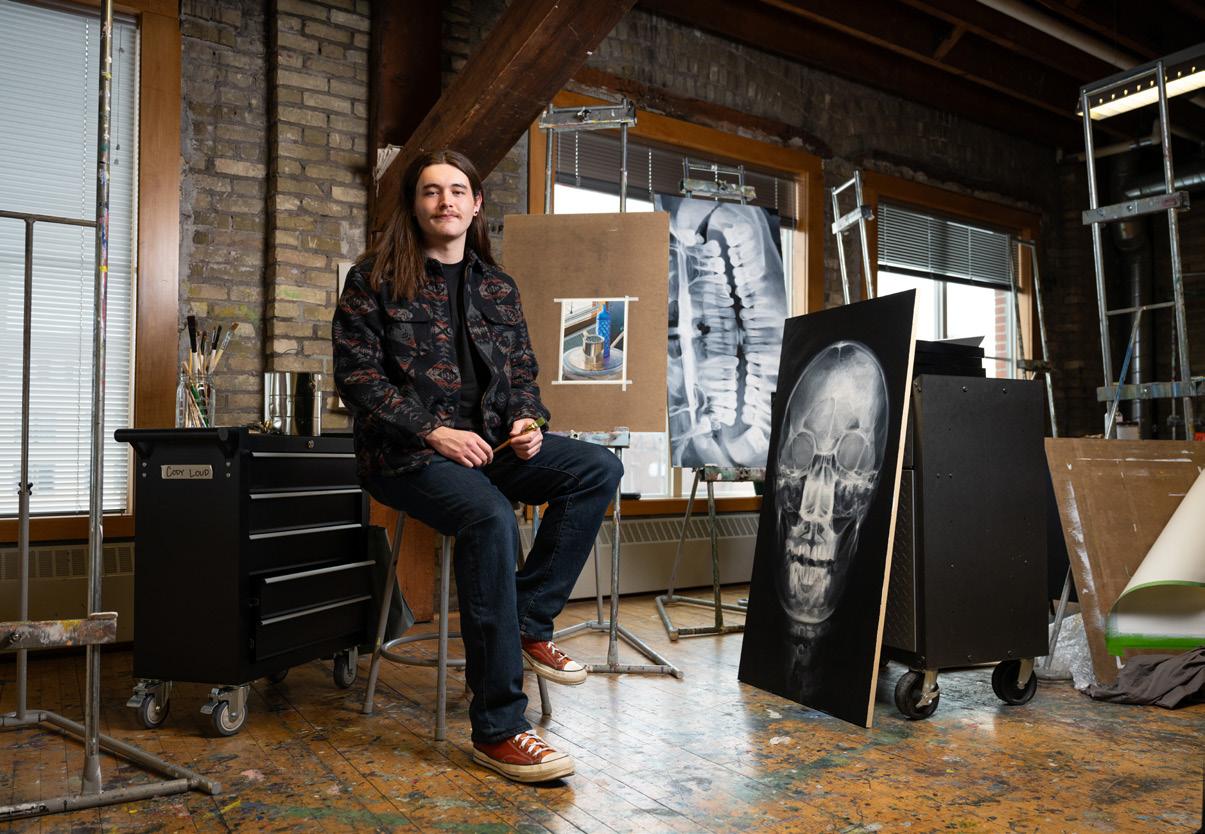
“They’re both creative fields and there’s all this opportunity for interdisciplinary work, which, at this point in my education, I can’t really separate the two,” he said. “No matter the class, there’s always a chance to work on an individual project and really make it my own.”
With the schools of art, design and architecture all taking place under one roof at Renaissance Hall in Fargo, the cross-pollination of ideas and skills is common.
“There’s truly an encouragement of interdisciplinary work there,” he said.
While in his third year of the architecture program, one project his class worked on was with art students. Loud said that’s probably been his favorite project so far because it exposed him to different working styles and made him think, “I want to do what they do,” he said.
A year later, a project called Imagining Minot, sent architecture students to the North Dakota city to visit with stakeholders such as city leaders and developers, and come up with proposals for ways they could reinvigorate the city, Loud said.
“Renaissance Hall in downtown Fargo is called Renaissance because when it brought all the students downtown, it brought life to downtown that didn’t exist previously, and that’s what Minot was
looking for to happen in their town. That’s why they brought us there in the first place,” he said.
Loud’s artwork has gotten notice on campus, which has helped fuel his focus. He’s taken Best in Show for a 2023 juried undergraduate art show, and an animation he submitted to the AAF (American Advertising Federation) North Dakota chapter earned him a student gold ADDY Award. Those recognitions gave him the confidence to continue with the creative arts.
“I made it my thing to do everything,” Loud said. “That’s where the interdisciplinary work really starts to shine because I have all these strengths that translate to different mediums that I can start taking back to architecture.”
Loud cited three instructors for having the most impact on his education so far. The first is Andrew Stark, assistant professor of practice at NDSU’s School of Design, Architecture and Art (SoDAA).
“In my second year of architecture, he was teaching Creativity in Communication class where I was making all these drawings and by the end of it, had recommended I take up the minor in art. It had an impact on me because I already like art and now they’re recognizing my work. I have the ability if I want to do a dual major,” he said.
“The same thing sort of happened with advanced painting. The instructor there, Eric
Syvertson (assistant professor of Art Education and Studio Practice), was looking at my sketches one day for painting and kind of joked, ‘Why aren’t you a major in art?’ It was another moment where I thought, ‘Well, maybe I should be’.”
The third instructor who made a big impact on Loud was Michael Strand, professor and director of the School of Design, Architecture and Art, who encouraged Loud to apply for a fellowship for the NDSU Museum.
A few years away from jumping full-time into a career, Loud is keeping his options open. He said he’d like to find something where he could use both of his degrees -- maybe contributing to architectural designs, or as an art director for movies or video games. His ultimate career goal is to establish a name for himself and eventually have the luxury of being choosy about what he wants to work on.
“I still have time to figure it out because I have a couple of years of grad school in front of me,” he said.
Loud shared his advice for those planning to study in a creative field: “Every single class you take is going to be important, because you’re building up your technical and digital libraries as well as your academic libraries and references. Make sure to make the most out of every single course you’re taking,” he said.

NDSU STUDENT CODY LOUD HAS A MASTER’S DEGREE IN ARCHITECTURE AND IS WORKING ON A BACHELOR’S DEGREE IN ART. / COURTESY JUSTIN EILER FOR NDSU
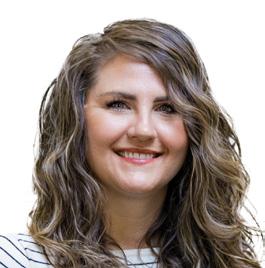
TERRI MILLER
SIOUX FALLS, S.D. • Architecture Incorporated is excited to announce Terri Miller, AIA, CDT, NCARB as a new partner in the firm. With a master’s in architecture and bachelor’s degree in environmental design from North Dakota State University, Miller has been an integral part of our team since 2016. She has 17 years of architectural
experience and extensive expertise across a variety of project types, including business/corporate offices, K-12 education, higher education, and public works facilities. Her leadership, experience, and dedication position her to help guide and advise the firm as we continue to grow and build on our legacy.

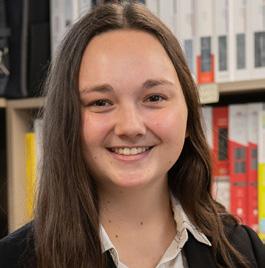
SIOUX FALLS, S.D. • Interior designers McKenna Shallberg and Emma Velde of TSP, Inc. have each earned certification from the National Council for Interior Design Qualifications (NCIDQ).
Certification is the industry’s recognized indicator of proficiency in interior design principles and commitment to the profession. Those who have earned this credential have demonstrated their expertise in understanding and applying current codes to protect public health, safety, and welfare.
To become certified, qualified interior designers must apply to take the NCIDQ exam, which is administered by the Council for Interior Design Qualification (CIDQ). After CIDQ approves their eligibility, candidates schedule
each of the three sections of the exam and must pass each section within a specific time frame.
“I’m incredibly proud of McKenna and Emma for achieving this significant career milestone,” said TSP Chief Executive Officer Jared Nesje. “This accomplishment reflects their individual dedication while also strengthening our team, and we look forward to their ongoing contributions to our success.”
Shallberg, who joined TSP in 2023, holds a bachelor’s degree in interior design from South Dakota State University. Velde joined TSP in 2021, and she earned a bachelor’s degree in interior design from North Dakota State University.
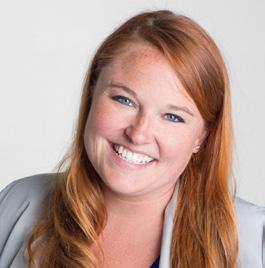
FARGO, N.D. • Enclave is pleased to announce the promotion of Donna Smith to President of Real Estate Management.
Smith joined Enclave in 2016 and has more than 15 years of experience in property management. Since starting at Enclave, she has led with a growth mindset, managing a portfolio that has quadrupled in size with nearly 6,000 multifamily units and 1.5 million square feet of commercial space.
Smith will continue to oversee Enclave’s property management division, and in her expanded role will add asset management, optimizing the value of
real estate assets through intentional oversight and informed decision-making.
“Donna has been instrumental in our growth and success,” said Eric Christianson, chief operating officer. “Her extensive experience and leadership uniquely position her to guide this critical area and drive our strategic objectives forward.”
A graduate of North Dakota State University, Smith received her bachelor’s degree in communications and social sciences. As president of Real Estate Management, she will use her industry expertise to elevate Enclave’s operations and deliver exceptional value to stakeholders.
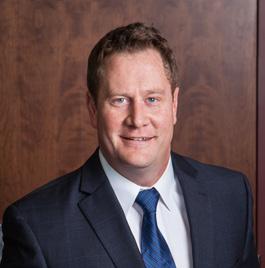
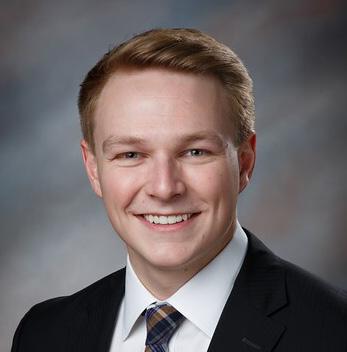
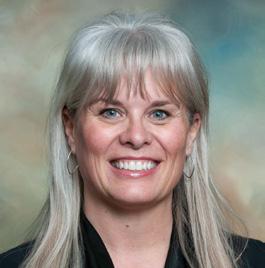
BISMARCK, N.D. • The Associated General Contractors of North Dakota (AGC of ND) elected its 2025 association officers during the group’s 75 th annual convention held recently in Bismarck.
Mike Dunn, Business Development manager for Grand Forks-based Construction Engineers, Inc., was elected 2025 president of the AGC of ND Board of Directors. Construction Engineers is a member of the association’s Building Division.
Molly Barnes, executive vice president for North Dakota-based Northern Improvement Company, was elected 2025 senior vice president of the AGC of ND Board of Directors. Northern Improvement Company is a member of the association’s Highway Division.
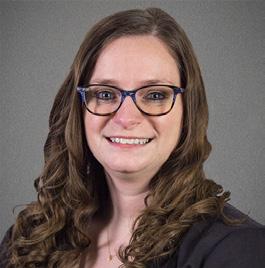
BISMARCK, N.D. • KLJ Engineering LLC (KLJ) is pleased to announce Katie DeWitt PE, structural engineer, recently earned the professional engineering (PE) license in the state of N.D.
DeWitt is a structural engineer with the Transportation group at KLJ. She has more than seven years of experience in bridge design. She has worked on various bridge structures, including pedestrian bridges, multi-span vehicular bridges, piers in waterways, and conventional prestressed concrete beam designs throughout the states of North Dakota and Minnesota. DeWitt earned her bachelor’s degree in civil engineering from North Dakota State University.
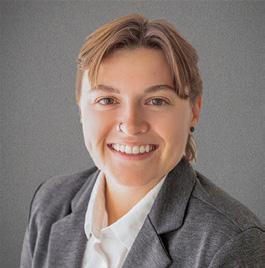
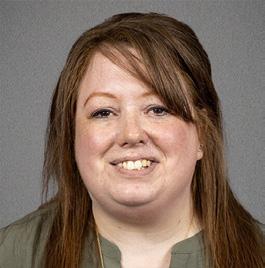
Matt Halvorson of Calibrate Wealth Partners in Fargo was elected 2025 secretary/treasurer of the AGC of ND Board of Directors. Calibrate Wealth Partners is a member of the association’s Associates Division.
The AGC of ND was formed in 1951 and represents 400 member firms, including the leading general contractors and businesses affiliated with the construction industry. AGC of ND is a chapter of the national Associated General Contractors of America, which represents more than 26,000 member firms. See more about the work the AGC of ND does by visiting its website at www.agcnd.org.
BISMARCK, N.D. • KLJ Engineering LLC (KLJ), is proud to announce the addition of two new employees in North Dakota. McKenzie Metzen and Tara Morast are the latest additions to the team. Metzen is a survey technician out of West Fargo, North Dakota, with the Survey team. Metzen brings a strong background in team leadership, organizational management, and problem-solving to her new role. Her diverse professional experience highlights her adaptability and dedication. Metzen earned her bachelor’s degree in social work from the University of North Dakota. Morast is an accounts receivable specialist with the Administrative Group. Morast has more than 10 years of experience in finance and accounting. Her experience includes accounts receivable, reconciling accounts, and resolving discrepancies, monthly reporting, and credit/ collections. She earned her associate’s degree in accounting from Bismarck State College. KLJ looks forward to their contributions to the company’s continued success.

This month we asked: How are you leading your organization to create an employee experience that engages your team?
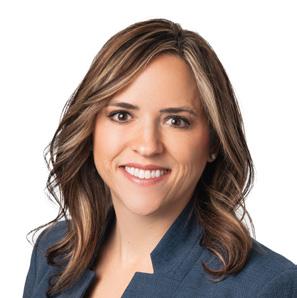
Chief Engagement Officer Alerus Fargo, N.D.
The employee experience expands across all parts of the workday, and different employees value different experiences, so our approach to retaining and engaging team members is multi-faceted. We regularly review and update our benefits, recognition programs, and development opportunities. This review recently led us to increase our number of paid holidays, modify our anniversary milestone program, and enhance our executive leadership’s team engagement with team members through monthly calls.
We also plan a variety of events, engagement initiatives, and surprises to engage and acknowledge our incredible team throughout the year, from social events and coordinated volunteer initiatives to companywide meetings and celebrating shared milestones, to surprise appreciation gifts. We regularly gather feedback from team members to use as we plan ahead to ensure we’re providing experiences our team members value.
We also recognize the impactful role managers have on the employee experience. Company managers meet monthly on a variety of topics to help improve communication, enhance their leadership impact, and build a consistent culture across the organization. And while workplace flexibility remains, we’ve found incredible value in having team members together. We’re investing in facilities to create great workplaces not only for our team but also for our clients. Engagement and employee experience are about the little things and the big things, which is why we focus on them through many different lenses.
As CEO of EAPC Architects Engineers (EAPC), I lead with a commitment to fostering an employee experience rooted in our core values: integrity, collaboration, commitment, stewardship, ideation, enterprising, and appreciation. At EAPC, we encourage collaboration and creativity through open dialogue and cross-disciplinary teamwork, empowering employees to innovate and grow. Professional development is a priority, with opportunities for mentorship, continuing education, and leadership training. One standout example is our Annual Leadership Summit, which brings our team together to explore forward-thinking ideas. At our most recent summit, a keynote presentation on artificial intelligence sparked enthusiasm and inspired employees to take action, resulting in the launch of our AI initiative. We celebrate achievements through meaningful recognition, creating a culture of appreciation. Additionally, we emphasize community impact by engaging in projects and initiatives that allow our team to see the difference their work makes. By listening to our employees and evolving to meet their needs, we cultivate an environment where they feel valued, supported, and inspired to thrive.


Throughout my 20-year leadership journey, I have learned that creating an engaging employee experience is ever-changing and evolving. As the needs and expectations of employees and teams change, I always go back to some key traits that I aspire to show as a leader.
The first key is that as a leader, aim to be personal, approachable and genuine. Do what you say you will do. Engaged teams appreciate roadblocks being removed. They also appreciate transparent communication and meaningful work that is purposeful and actionable. In every discussion I am a part of, I help coach the team on how we can continue to move forward and eventually solve the challenge, making every interaction actionable.
My New Year’s Resolution is to ensure I have more in-person interactions with my teams. It’s natural in our remote working world to resort to chat messages. I want to make more personal connections, so quite often, I make up an “excuse” to visit an employee in-person or via video. Here’s what I learned by doing this: we have an amazing team full of dynamic personalities who truly care about their coworkers, their work and our customers. Learn about each other, care for your teams, share the successes and help pick each other up when needed. As a leader, be that rock your teams can lean on!
Finally, the last piece of advice I can share is to make sure your teams are informed and are part of the decisions. And most importantly, have fun. For example, I am Santa Claus at our organization’s family Santa night and am the self-proclaimed star pitcher for our company kickball team. All opportunities for me to interact with my teams and form memories that last a lifetime!
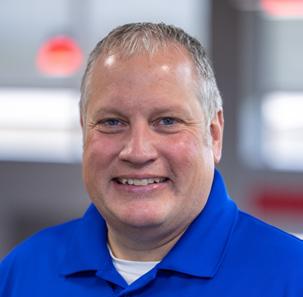
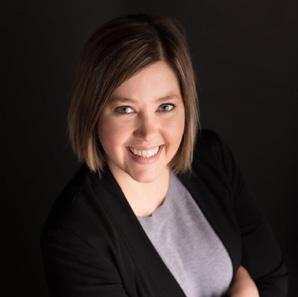
Jenny Hagelstrom
Employer Brand Communication Manager
Bobcat Company, Doosan Bobcat North America
West Fargo, N.D.
Bobcat is dedicated to offering an engaging employee experience backed by a culture of excellence, commitment, support and innovation in everything we do. Our success is fueled by our employees, who consistently go above and beyond in their dedication to empower people to accomplish more and in their desire to reimagine what’s possible.
Our employees take immense pride in their work and the impact it has on the wider community. We bring this to life through recognition and rewards systems, by regularly seeking employee feedback, and by actively encouraging employee volunteer time and involvement in community partnership programs and disaster relief efforts.
There is also a strong team mindset that fuels mutual success and empowers employees to explore their passions and develop in ways that work for them. For example, Bobcat promotes a healthy worklife balance with flexible working hours, remote work options and wellness programs in an environment where employees feel valued and respected.
Employees choose to grow their careers at Bobcat because the work remains interesting and challenging. We support professional development through training programs, workshops and career advancement opportunities. We encourage collaboration and innovation in an engaging environment where employees can thrive and feel connected to our mission and values.
Through this engagement, support and motivation, we strive to amplify employee engagement as their contributions are key to our ongoing success. As we continue to evolve and grow as a company, we remain committed to providing our people with opportunities for a successful career and future at Bobcat.

Total nonfarm payroll employment increased by 256,000 in December, and the unemployment rate changed little at 4.1%, the U.S. Bureau of Labor Statistics reported. Employment trended up in health care, government, and social assistance. Retail trade added jobs in December, following a job loss in November. The unemployment rate changed little at 4.1% in December. After increasing earlier in the year, the unemployment rate has been either 4.1% or 4.2% for the past 7 months.
Among the unemployed, the number of permanent job losers declined by 164,000 to 1.7 million in December but is little different from a year earlier. The number of people on temporary layoff, at 862,000, changed little over the month and over the year. In December, the number of long-term unemployed (those jobless for 27 weeks or more) changed little at 1.6 million but is up by 278,000 from a year earlier. The long-term unemployed accounted for 22.4% of all unemployed people in December.
In December, average hourly earnings for all employees on private nonfarm payrolls rose by 10 cents, or 0.3%, to $35.69. Over the past 12 months, average hourly earnings have increased by 3.9%. In December, average hourly earnings of private-sector production and nonsupervisory employees, at $30.62, were little changed (+6 cents).
CHANGES BY INDUSTRY, MONTHLY CHANGES, WITH
Total nonfarm payroll employment rose by 256,000 in December. Employment trended up in health care, government, and social assistance. Retail trade added jobs in December, following a job loss in November. Payroll employment rose by 2.2 million in 2024 (an average monthly gain of 186,000), less than the increase of 3.0 million in 2023 (an average monthly gain of 251,000).


























































A N E W C H A P T E R


For over 50 year s, T SP ha s helped shape Rapid Cit y ’s sk y line with legac y buildings and thoughtf ul de signs—and our focus remains fir mly on the f uture Our new office space reflec t s our ongoing commitment to innovation, embr acing new technologie s, and deliver ing impac tf ul solutions that will continue to shape this cit y, communit y, and region.
For over 50 year s, T SP ha s helped shape Rapid Cit y ’s sk y line with legac y buildings and thoughtf ul de signs—and our focus remains fir mly on the f uture Our new office space reflec t s our ongoing commitment to innovation, embr acing new technologie s, and deliver ing impac tf ul solutions that will continue to shape this cit y, communit y, and region.
Forover50years,TSPhashelpedshapeRapidCity’sskylinewithlegacybuildingsand thoughtfuldesigns—andourfocusremainsfirmlyonthefuture.Ournewofficespace reflectsourongoingcommitmenttoinnovation,embracingnewtechnologies,and deliveringimpactfulsolutionsthatwillcontinuetoshapethiscity,community,andregion. Aswecelebrate95yearsofTSP,wehonorourlegacyofdesignexcellencewhileproudly embracingourroleinmakingcommunitiesbetter,bydesign.
Forover50years,TSPhashelpedshapeRapidCity’sskylinewithlegacybuildingsand thoughtfuldesigns—andourfocusremainsfirmlyonthefuture.Ournewofficespace reflectsourongoingcommitmenttoinnovation,embracingnewtechnologies,and deliveringimpactfulsolutionsthatwillcontinuetoshapethiscity,community,andregion. Aswecelebrate95yearsofTSP,wehonorourlegacyofdesignexcellencewhileproudly embracingourroleinmakingcommunitiesbetter,bydesign.
A s we celebr ate 95 year s of T SP, we honor our legac y of de sign excellence while proudly embr acing our role in mak ing communitie s bet ter, by de sign.
A s we celebr ate 95 year s of T SP, we honor our legac y of de sign excellence while proudly embr acing our role in mak ing communitie s bet ter, by de sign.
L E A D I N G T S P ’S S U C C E S S I N R A P I D C I T Y
LEADINGTSP’SSUCCESSINRAPIDCITY
L E A D I N G T S P ’S S U C C E S S I N R A P I D C I T Y T SP Rapid Cit y





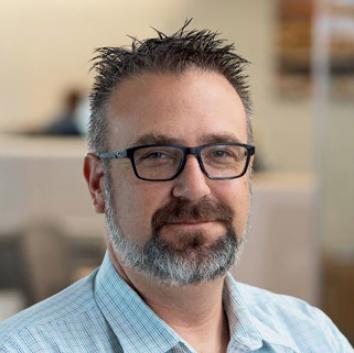



MARK AVERETT, AIA Principal | Architect
MARKAVERETT,AIA Principal|Architect DirectorofMarketing& BusinessDevelopment
MARK AVERETT, AIA Principal | Architect
Director of Marketing & Business Development
MARKAVERETT,AIA Principal|Architect DirectorofMarketing& BusinessDevelopment
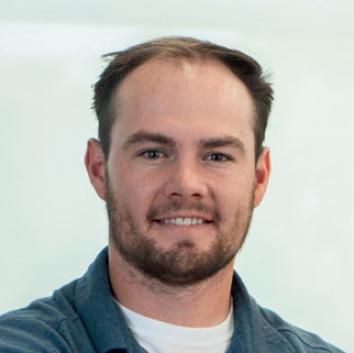


Director of Marketing & Business Development

CHRIS
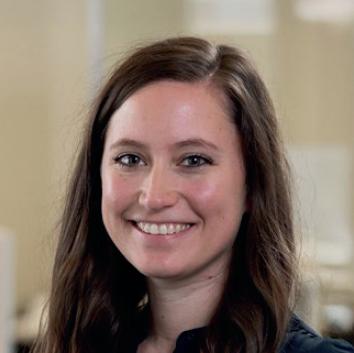








CHRIS MAKS, PE Mechanical Engineer
MAKS,
MechanicalEngineer
CHRISMAKS,PE MechanicalEngineer
PE Mechanical Engineer
KELLI OSTERLOO, PE
DirectorofPractice
KELLIOSTERLOO,PE DirectorofPractice
Director of Practice
PE Director of Practice


